Ms. Kristie Camp is a PhD candidate who has taught English Language Arts for 26 years. Her webinar provides a picture of how to grow environmental literacy in an outdoor classroom.

Flashback to our theme on Financial Literacy! Due to publisher error, Derrick Shepard’s blog was delayed. So, it is now time to hear how Dr. Shepard supports this quote by Jane Bryant Quinn: “No one is born with a mind for personal finances.” Read more about our author at the end of his blog.
Sit with the above quote for a second before moving on. What comes to your mind after you read it? What feelings are elicited? Does the quote speak to you, to the students you are trying to instill a sense of understanding of financial literacy?
The Organisation for Economic Co-operation and Development (2019) defines “Financial literacy as knowledge and understanding of financial concepts and risks, as well as the skills and attitudes to apply such knowledge and understanding in order to make effective decisions across a range of financial contexts to improve the financial wellbeing of individuals and society, and to enable participation in economic life.”
The definition is holistic, but it is important to remember that a person’s understanding of financial literacy rests in their knowledge, understanding, attitudes toward financial literacy, and skills to implement a plan that incorporates all three. Now, revisit your thoughts and feelings about the above quote. Did anything change?
There is no denying that individuals need a basic understanding of financial literacy to navigate this capitalist society. Understanding how one’s credit score can impact everything from mortgage rates to credit card rates to the amount you pay for automobile insurance can help save money for the future. As educators, it is incumbent upon us to teach the 3 Rs and relay life skills, including financial literacy, to our students to help them grow into productive and responsible citizens. But how do we do it?
Our students live in a 24-hour, 365-day-a-year social media cycle that never ends. They are bombarded with messages every time they pick up their smartphones, and financial messages (e.g., how to make money) are prominent in the messaging. What I call “salespeople” (and I am being kind) promise riches with little to no effect. Ya, right. Other messages are more “old school” in that they speak to one’s athletic, musical, or artistic abilities to achieve the American Dream. Have you seen some commercials or music videos lately? An example of this is one of Toyota’s commercials for its Tundra Capstone. The actors promote the truck, which is nice and comes in at around $75000 as if it’s a status symbol to achieve to be accepted in the group. As educators, we know group interaction and acceptance are important for one’s development, especially during the pre-adolescent and adolescent years.
So, what messages are students receiving outside of the classroom regarding money?
Reflecting stopping point.
As educators vested in their students’ success, what do you know about them? I bet it’s a lot. You know their likes and dislikes. You know what their home lives are like to a degree. You know them, not as an aggregate reflection of a class roster. No, you know them as individuals with strengths and areas of growth. In knowing and considering this, remember this:
Financial Literacy IS NOT one size fits all.
To the best of your ability, you must consider individual demographics (e.g., racial identity, social class, ethnicity) when constructing an Individual Financial Education Plan (not be confused with an IEP, pun attended). Why is it so important that students’ financial education be individualized as possible? As Frederick Nietzche put it, “‘This-now my way: where is yours?” Thus, I answered those who asked me ‘the way.’ For the way-does not exist.!” As with an IEP, one’s Individual Financial Education Plan (IFEP) needs to be individualized because we all have different backgrounds, values, hopes, and aspirations.
I am not going to leave without some recommendations and resources.
The Psychology of Money (2021) by Morgan Housel is a terrific resource for taking a deeper dive into why we make the decisions we make regarding money. I tweaked his recommendations from the book to fit your students’ age demographics.
- Have students not be too hard on themselves when things go wrong financially.
Setting financial goals is the first step, but as with any goal, things can, and most likely will, go wrong, and mistakes will be made. It is our responsibility to instill a sense of forgiveness in them.
- Focus on wealth and not the ego.
Students are bombarded with messages to spend money. You have to have that new phone. Making saving cool can be (is) hard while living in an instant gratification society. Media does not make it any easier. However, we still need to figure out what makes our students tick and how to circumvent those messages to the best of our ability. Again, we know our students better than some algorithms. 😊
- Time is their friend.
Saving $10 a month does not seem like a lot; however, compound interest is the 8th wonder of the world. Use a time horizon calculator to show them what savings look like today and in the future. There are tons of time horizon calculators out there. Here’s one: https://smartasset.com/investing/investment-calculator
- You can replace money, but you cannot replace time.
Time is as precious as money. You can always get back money, but time is gone. We must impress upon our students to use their time wisely when it comes to finances. I can imagine you already do this in your role as an educator. Just put a twist on it and add the money.
- Be nicer and less flashy.
This gets into social-emotional learning. Housel (2020) states that one “is impressed with possessions as much as you are (p. 209). He argues, instead, that we are looking for respect and admiration from our peers (Housel, 2020). Having kindness and being respectful are other ways to gain respect from our peers.
- Save, baby, save!
Go back to recommendation #3.
- Help your students define what “success” means for them.
I am going to address this recommendation with my counselor educator hat on. Part of being a good counselor is to be open and congruent with clients. As the saying goes, “Clients will only go as deep as you are willing to go with yourself.” With that in mind, we need to remember the core condition of Unconditional Positive Regard (for our students and ourselves) when we teach financial literacy. We need to be Congruent and be who we are with our students when we teach financial literacy, and, finally, we need to show Empathy for those, including ourselves, who are struggling to better themselves but not knowing what they do not know.
- Help students define their “game.”
Financial success looks different for every student. What one considers a success may be an overreach or underreach for the next. There is no way. But, we can help our students reflect, critically think, and plan for a future that fits them.
Finally, I want to leave you with some financial resources that may assist you and your students in gaining a better understanding of personal finance.
The National Endowment for Financial Education (NEFE) champions effective financial education. They are the independent, centralizing voice that provides leadership, research, and collaboration to advance financial well-being.
The Consumer Financial Protection Bureau is a U.S. government agency dedicated to ensuring you are treated fairly by banks, lenders, and other financial institutions.
Khan Academy offers practice exercises, instructional videos, and a personalized learning dashboard that empowers learners to study at their own pace in and outside the classroom.
- 15 Financial Literacy Activities for High School Students (PDFs) (moneyprodigy.com)
- https://www.kidsmoney.org/teachers/financial-literacy-activities-high-school/
I hope you enjoyed reading this as much as I enjoyed writing it for you. The financial literacy journey is complex and ever-changing. But what does not change is our duty as educators to help our students grow and develop into the individuals we know they are capable of.


Dr. Stephanie Lemley develops socio-economic awareness as students experience disciplinary literacy in an agricultural setting. Read more about Dr. Lemley at the end of her blog.
As a literacy teacher educator and a PI or Co-PI on three United States Department of Agriculture/National Institute of Food and Agriculture (USDA/NIFA) grants for professional development in agricultural literacy, I have been fortunate to work with teachers across Mississippi on infusing agricultural literacy into their classroom instruction. Two of my grants have enabled me to create a summer professional development and then host the teachers on the university campus in the fall and spring for follow-up days. This school year I am working with colleagues from Agricultural Education, Leadership, and Communication, Poultry Science, and Food Science and 28 amazing K-12 teachers from across the state. The teachers’ experiences range from starting their first year of teaching to 25+ years in the classroom. We are currently working with content areas such as special education (e.g., gifted and inclusion classrooms), mathematics, ELA, science, welding, and agriculture. During a four-day, intensive workshop this summer, the teachers learned how to incorporate poultry science and food science content knowledge and lab investigations, literacy instruction, and socio-emotional learning (SEL) skills into their classroom.
This is important because most Americans are agriculturally illiterate (Taylor, 2021, July 7). In fact, in most cases, individuals are three generations removed from the farm, which means more and more people are not aware of where their food comes from (Brandon, 2012, March 30). The American Farm Bureau Foundation for Agriculture (2012) has created pillars of ag literacy, one of which is understanding the connections between agriculture and the environment. Hubert et al. (2000) posited that teachers can use agriculture as a topic to teach about the environment and the world around them. This focus on the natural world can also be a great way to infuse socio-emotional learning (SEL) skills into the curriculum as well (Carter, 2016).
Socio-emotional learning (SEL) skills is an “umbrella term used to describe psychological constructs such as personality traits, motivation, or values” (Danner et al., 2021). When teachers teach these skills to their students, they are helping them become efficient workers who know how to build trusting relationships with others, cope with change, serve as leaders, and produce creative solutions to solve problems (Danner et al., 2021). These skills include responsible decision making, self-awareness, self-management, and relationship skills (National University, 2022, Aug. 17). Agricultural topics are the perfect place to teach socio-emotional skills to students because of the diversity of content and emphasis on problem solving. For example, when discussing food choices, students are practicing the socio-emotional skill of responsible decision making; when working in groups to complete labs, students will be practicing the socio-emotional skills of social awareness and relationship skills.
Here’s an example of how teachers who work with me in the four-day workshop investigate the topic of ‘hunger in Mississippi’ through book readings (How Did That Get in My Lunchbox?: The Story of Food by Chris Butterworth, Maddi’s Fridge by Lois Brandt, and Free Lunch by Rex Ogle), online investigations, and proposed solutions to food waste in local communities. We tied the topic of hunger to a variety of Mississippi state science standards.
Table 1. Example Mississippi College-and-Career Readiness Standards for Science
| Example Science Standards |
| L.K.1A Students will demonstrate an understanding of living and nonliving things. L.K.3A Students will demonstrate an understanding of what animals and plants need to live and grow.L.2.3A Students will demonstrate an understanding of the interdependence of living things and the environment in which they live. L.2.3A.1 Evaluate and communicate findings from informational text or other media to describe how animals change and respond to rapid or slow changes in their environment (fire, pollution, changes in tide, availability of food/water). L.5.3B Students will demonstrate an understanding of a healthy ecosystem with a stable web of life and the roles of living things within a food chain and/or food web, including producers, primary and secondary consumers, and decomposers. L.5.3B.1 Obtain and evaluate scientific information regarding the characteristics of different ecosystems and the organisms they support (e.g., salt and fresh water, deserts, grasslands, forests, rain forests, or polar tundra lands). L.5.3B.2 Develop and use a food chain model to classify organisms as producers, consumers, or decomposers. Trace the energy flow to explain how each group of organisms obtains energy. L.7.3 Students will demonstrate an understanding of the importance that matter cycles between living and nonliving parts of the ecosystem to sustain life on Earth. L.7.3.5 Design solutions for sustaining the health of ecosystems to maintain biodiversity and the resources needed by humans for survival (e.g., water purification, nutrient recycling, prevention of soil erosion, and prevention management of invasive species). |
On the first day of the workshop, teachers investigate ‘hunger’ in their local school district, local community, and the state. First, they searched “hunger in Mississippi” and looked at sites such as Mississippi Food Network (https://www.msfoodnet.org/about-us/hunger/) and Feeding America (https://www.feedingamerica.org/hunger-in-america/mississippi). Then, they searched “hunger in [insert county or city name]. Finally, they looked at hunger in their own school district. One source of data they looked at was from the Mississippi Department of Education (https://www.mdek12.org/sites/default/files/documents/OCN/2023/SFSP/free_and_reduced_data_report_2022-23.pdf). They wrote information that they found on sticky notes and then shared out the information with the rest of the class.
This initial foray into hunger allowed the teachers to learn more about this impactful issue across the state. For many, it reinforced information they already knew about their own community, but it was eye-opening for many to see how big of a problem it is statewide. For example, in looking at the free and reduced lunch data, many were surprised that some of the perceived ‘affluent’ counties in the state still had multiple schools with high percentages of free and reduced lunch. As such, this topic introduced them to a part of environmental and agricultural literacy—food literacy (Siegner, 2019). Food literacy is defined as “the scaffolding that empowers individuals, households, communities, and nations to protect diet quality through change and strengthen dietary resilience over time. It is composed of a collection of inter-related knowledge, skills, and behaviours required to plan, manage, select, prepare, and eat food to meet needs and determine intake” (Vidgen & Gallegos, 2014, p. 54). In addition, this investigation reinforced the SEL skill of social awareness—showing understanding and empathy to others—because it required them to reflect on their own students and how many of them might come to school hungry and need additional sustenance to stay focused during the school day. The second day, the teachers worked in groups to create an innovative way to address food waste in communities. This activity required them to think scientifically and utilize precise science and engineering terminology and design methods to create their solution. We chose this activity because many of the teachers had recently talked about how much food was wasted either at restaurants or at their schools during lunch and how they would like to put some of that food to good use in their community.

On the third day, the teachers, in groups, created hero scientist cards on a food science or poultry science scientist who has done work that impacts hunger in the state. This activity required the teachers to showcase a scientist who has had a positive impact in improving Mississippi’s environment and its agricultural industry. This activity also required the teachers to not only work on SEL skills such as relationship skills and self-management, but also to use discipline-specific terminology related to the food science or poultry science field when adding information to their trading card.


After the summer PD, the teachers returned to their classrooms and implemented lessons that we had done with them in their own teaching. Many used the agriculture texts to teach SEL skills and the food supply. They used the strategies and activities we taught them, and they also shared their new knowledge with their colleagues at their school site or in their district. During the fall follow-up day, the teachers continued to investigate hunger, but this time looked at it not just from a regional and state perspective but also a worldwide perspective. I chose to focus on hunger more broadly this time to show them how they could have their students consider hunger in their own community first (as we did in the summer) but then have them realize that hunger is not just a Mississippi problem—in fact it is a problem in our region, country, and world as well. The lesson and activities I implemented were also tied to state standards in the science, mathematics, social studies, and ELA standards.
Table 2. Example Mississippi College-and-Career Readiness Standards.
| Mississippi College-and-Career Readiness Standards for Social Studies | Mississippi College-and-Career Readiness Standards for Science | Mississippi College-and-Career Readiness Standards for English/Language Arts |
| 6.8 Examine how humans and the physical environment are impacted by the extraction of resources and by natural hazards 3. Assess the opportunities and constraints for human activities created by the physical environment. | ENV.4 Students will demonstrate an understanding of the interdependence of human sustainability and the environment. ENV.4.3 Enrichment: Research and analyze case studies to determine the impact of human‐related and natural environmental changes on human health and communicate possible solutions to reduce/resolve the dilemma. | RI.6.7 Integrate information presented in different media or formats (e.g., visually, quantitatively) as well as in words to develop a coherent understanding of a topic or issue. |
First, they watched a video about the area of Memphis, TN, that is a food desert (see link in resources). The video was then tied into the National Agriculture in the Classroom lesson on ‘Hunger and Malnutrition (see link in resources). In this lesson, students investigate the importance of eating a variety of nutritious foods and explore diets around the world. The teachers were introduced to more health and food science terminology such as nutrient, undernourishment, food bank, staples, accompanying foods, and hunger. They then used the National Geographic website, What the World Eats, and answered the following questions:
- Which country consumes the most calories in a day?
- Which country consumes the fewest calories in a day?
- Which country consumes the most 1) red meat, 2) grain, 3) sugar, and 4) fat?
- Which country consumes the least 1) red meat, 2) grain, 3) sugar, and 4) fat?
After they had worked on this investigation, we discussed what they found across groups. These activities continued reinforcing SEL skills such as social awareness, relationship skills, and self-management as they negotiated group tasks. It also provided them an opportunity to continue to investigate environmental and agricultural literacies specifically food literacy. This is important because part of being agriculturally literacy involves understanding the food system and the importance of plants and animals to our environment. The workshop concluded with the teachers being introduced to two short films from Mississippi State University Films: one of which was on food insecurity, and one of which was on a local school district response to schools shutting down during the COVID-19 pandemic and getting food to the students who relied on school lunch as part of their food sources daily. These videos provided a real-world example of people using socio-emotional skills, such as responsible decision making, compassion, and relationship-building to make a difference in the local community. Further, the teachers learned about ways that community members are stepping up to help end food insecurity in their own backyards through the creation of local farmers markets and other means. This can help further develop their agricultural literacy knowledge because they have a deeper understanding of the food system.
I wanted to share these lessons and resources with my teachers because I wanted to show them how they could help their students become more agriculturally literate with a topic that is relevant to everyone—hunger and food. Over the school year, some teachers have emailed me to share how impactful these agricultural literacy SEL lessons have been for their students, particularly reading the book Free Lunch with their class and then investigating hunger in their community and where food comes from. Others expressed this in their delayed post follow up survey. For example, one teacher wrote that creating trading cards has been the most successful activity with their classes. They noted, “The kids love it and are all 100% into it.” Creating the trading cards on scientists allowed students to showcase their learning in a creative way. Another teacher wrote that participating this year helped them have “more opportunities for students to learn agriculture in different cultures, bringing awareness of food deserts and waste.” The teacher said the students particularly enjoyed exploring the National Geographic website and watching the videos about Memphis and food insecurity in the Mississippi Delta; learning about this topic had them think about what nutritious food was available to them on a regular basis outside of school. Another teacher wrote participating in the professional learning gave her “an enhanced sensitivity to food deprivation within my classroom.” These lessons over the past year opened this teachers’ eyes to hunger in their own students and the teacher has made it a priority to have nutritious snacks available for the students. Two others wrote, “All of the SEL!” for their response. Finally, one additional teacher wrote, “From ACRE 2.0, I’ve already used interactive simulations and hands-on experiments in my class. Next, I plan to add collaborative projects and real-world problem-solving tasks. These activities deepen understanding and build teamwork skills. Additionally, I’ll integrate more tech tools for personalized learning.”
References
American Farm Bureau Foundation for Agriculture (2012. Pillars of agricultural literacy. https://www.agfoundation.org/files/PillarsPacket062016.pdf
Brandon, H. (2012, March 30). At what cost the disconnect between agriculture and the public? https://www.farmprogress.com/commentary/at-what-cost-the-disconnect-between-agriculture-and-the-public-
Carter, D. (2016). A nature-based social-emotional approach to supporting young children’s holistic development in classrooms with and without walls: The socio-emotional and environmental education development (SEED) framework. International Journal of Early Childhood Environmental Education, 9-24.
Danner, D., Lechner, C.M., & Spengler, M. (2021). Editorial: Do we need socio-emotional skills? Frontiers in Psychology, 12, 1-3. 10.3389/fpsyg.2021.723470.
Hubert, D., Frank, A., & Igo, C. (2000). Environmental and agricultural literacy education. Water, Air, Soil Pollution, 123, 525-532. https;//doi.org/10.1023/A:1005260816483
National University. (2022, August 17). What is social emotional learning (SEL): Why it matters. https://www.nu.edu/blog/social-emotional-learning-sel-why-it-matters-for-educators/
Siegner, A.B. (2019). Growing environmental literacy: On small-scale farms, in the urban agroecosystem, and in school garden classrooms [Doctoral dissertation, University of California Berkeley]. UC Campus Repository. https://escholarship.org/content/qt4p16p53v/qt4p16p53v_noSplash_53f7a6e2917068410defb11335b7ac1b.pdf?t=q6z2hg
Taylor, B. (2021, July 7). Ag illiteracy: What happened, and where do we go from here? https://www.agdaily.com/insights/ag-illiteracy-what-happened-where-to-go/
Vidgen, H.A., & Gallegos, D. (2014). Defining food literacy and its components. Appetite, 76, 50-59. https://dx.doi.org/10.1016/j.appet.2014.01.010
Resources
Judd-Murray, R. (2013). Hunger and malnutrition (grades 3-5). National Agriculture in the Classroom. https://agclassroom.org/matrix/lesson/388/
Mississippi Department of Education. (2023). Mississippi college-and-career readiness standards. https://www.mdek12.org/OAE/college-and-career-readiness-standards
Team, I. W. D. (2024, February 14). The hungriest state. MSU Films. https://www.films.msstate.edu/series/the-hungriest-state
What the world eats. National Geographic. (n.d.). https://www.nationalgeographic.com/what-the-world-eats/
YouTube. (2019, November 20). The food deserts of Memphis: Inside America’s hunger capital | divided cities. YouTube. https://www.youtube.com/watch?v=E6ZpkhPciaUxs
Funding Statement:
This work is supported by the USDA/NIFA National Institute of Food and Agriculture, AFRI Agricultural Workforce Training Priority Area, award # 2022-08873.
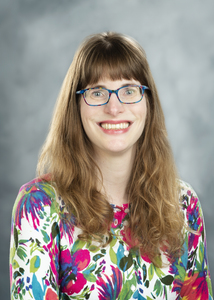
About the Author:
Dr. Stephanie M. Lemley is an Associate Professor of Content-Area Literacy and Disciplinary Literacy Instruction in the elementary education program in the Department of Teacher Education and Leadership in the College of Education at Mississippi State University. She is the recipient of three USDA/NIFA grants on professional development in agriculturally literacy (either as PI or Co-PI) and in the last four years has worked with approximately 150 K-12 teachers across the state, either virtually or through face-to-face instruction, on infusing agricultural literacy into their classroom instruction. She can be contacted at smb748@msstate.edu .
Financial Literacy is Financial Behavior
We welcome Dr. Derrick Shepard to our conversation on Financial Literacy! In this webinar, he empowers teachers to explore financial literacy as a social means of communication, co-constructed through the lens of their other identities. Read more about Dr. Shepard below.
Financial Literacy is Financial Behavior

Dr. Derrick Shepard is an Assistant Professor at the University of Tennessee, Martin. His research interests include multiculturalism in counseling, social class awareness, skills related to counselor preparation and pedagogical practices in counselor education and supervision.
Rubrics to Support Writers

Dr. Christina Dobbs follows up her webinar with this blog to challenge instructors to create rubrics that grow writing literacy and result in positive student-teacher interaction. Read more about her at the end of the blog.
During the COVID-19 pandemic, I had planned a study of writing instruction at the university level that involved interviews with students and visits to introductory writing classes that would help understand how undergraduates had made the transition from high school to university writing. But fate intervened and doing work to observe in class instructional spaces became complicated as we began to teach and work from home, and so I made a decision to just keep interviewing undergraduates about their experiences. Eighty interviews later, I am so glad to have had the opportunity to talk deeply with a wide range of students about their experience of writing in school across their lives and whether and how they see themselves as writers.
This work, alongside some other work with my colleague Chris Leider from UMass Boston, has caused me to spend time thinking deeply about the feedback we explicitly and implicitly give to students about their writing. As a teacher, I always struggled to give feedback on writing in a timely way that still felt deeply engaged with the work, and students didn’t always use the feedback I gave them to improve their writing, which never felt good. This new work about more effective and culturally sustaining feedback for students has helped me to understand what might have worked better in my own classroom and even in my own experience as a writer myself.
Across the work Chris and I have done with teachers over time and what I learned about feedback from my interviews with undergraduates, I have come to a new approach to feedback. Here are two lessons learned across those projects.
Lesson #1: Even if we didn’t know it, students remember our feedback, especially when they feel it was negative.
In talking with undergraduates about the feedback they received on their writing and times they felt proud of their writing, I was shocked by how much they remembered about feedback they had been given. Students relayed memories from elementary, middle, and high school as well as college, and sometimes they still felt strong emotions associated with those memories.
They described memories when a teacher had made them feel as though their ideas were worth engaging and that they had written something thought-provoking. They also described the positive experience of answering questions about their writing when feedback was given or feeling like their work inspired curiosity from the reader.
They also relayed moments when they got feedback that made them feel like their teachers had not really engaged with their ideas. This included times when they only got feedback on surface conventions or grammar, but it also included times when they just got a ‘good job’ or ‘great work’ too. Somehow this insubstantial positive feedback also made students feel as though they had not written ideas worth engaging.
Most importantly, the writers often described wanting to improve their work, but feeling as though some feedback they received was not helping them to do so. Some even described the feedback as showing them they actually would not be able to improve. They described teachers who made them feel as though they were already supposed to know everything before they took the class and those who clearly conveyed that they could improve.
This has led to a few ideas about giving feedback that I carry forward:
- Asking questions about the content seems to matter to many writers.
- Encouraging writers through feedback at various levels of the work, from the overall idea to the conventions, can support students in viewing their work as substantial.
- Telling students that they can improve, and we will help them to do so explicitly can convey our belief in students’ potential for growth.
Lesson #2: It doesn’t matter what you say to students if your rubric says something else.
The rubrics we use to evaluate student writing often use harsh and deficit-driven language to separate students in particular categories. Rubrics will have category labels such as ‘unsatisfactory,’ ‘below expectations,’ or ‘warning’ to delineate performance, with upper category labels with headings like ‘outstanding’ or ‘excellent.’
Then within categories, the statements to describe various levels of performance will have language such as:
- Writer has little or no control over sentence structure.
- Reasoning is incoherent or unclear.
- The use of language fails to demonstrate skill in responding to the task. (This example is from the ACT rubric.)
The designers of rubrics such as these likely did not think they were harshly commenting on students as writers; in fact, they likely thought they were only commenting on the piece of writing at hand and how well it communicates.
But the personal nature of writing and the ways that writers use feedback and comparison to others to drive their own writing self-efficacy (Pajares, 2003; Pajares & Johnson, 1996) makes it clear that writers likely internalize some of this commentary as about themselves, even if the teacher giving feedback did not mean it as such. Indeed, in my interviews with undergraduate students, they frequently described memorable feedback and harsh rubrics from many years earlier (going back to elementary) as drivers of whether they perceived themselves as writers in college years later.
Chris and I developed a question framework to help guide teachers in redesigning rubrics in ways that still convey critical feedback to students in ways that feel encouraging and supportive. We use these four questions to help teams of teachers we work with to revise rubrics to convey feedback in more supportive and equity-driven ways. The four questions (from Dobbs & Leider, 2021) are as follows:
- Does the rubric’s scale of values for judging responses suggest that students have room to grow?
- Do the tools emphasize development and purpose when it comes to language use?
- Does the rubric feedback connect student language to audience?
- Does the tool explicitly acknowledge that students have agency in choosing which of their language resources to use?
We use these questions not to shift the feedback away from various elements of the writing that we want to give feedback about, but rather to push us to phrase our thinking in a way that treats writers in humane and supportive ways.
So, we use these framing questions to rephrase headings and sentences on rubrics. What might have said ‘unsatisfactory’ before might say ‘still learning,’ ‘room to grow,’ or even ‘focus for next time.’ Where we might have said that ‘reasoning was incoherent,’ we might shift to say that ‘the writer’s reasons supporting their argument were challenging for the reader to understand.’
These sorts of changes convey to students that they can still be working on various elements of their writing, which all students are doing and is the purpose of schooling. They can also convey that writing feedback is not a matter of knowing how to do it ‘right’ or ‘wrong,’ but it is rather a matter of whether your communicative purpose was understood by the audience. It also conveys that students made choices about the writing they chose to put forward and that they can continue to improve that writing’s purpose, not just it’s perceived correctness on things like punctuation.
Over time, I’ve learned that giving feedback is meaningful to students in ways I had not always realized, and that making purposeful and specific choices in how to give feedback can make a huge difference in how students are able to take up the feedback we give them. That way, years down the road when they are in college and being interviewed, they will relay memories of feeling supported and confident as writers.
References
Dobbs, C. L. & Leider, C. M. (2021). A framework for writing rubrics to support linguistically diverse students. English Journal, 110(5), 60-68.
Pajares, F. (2003). Self-efficacy beliefs, motivation, and achievement in writing: A review of the literature. Reading and Writing Quarterly, 19(2), 138-158.
Pajares, F. & Johnson, M. (1996). Self-efficacy beliefs in the writing of high school students: A path analysis. Psychology in the Schools, 33(2), 163-175.
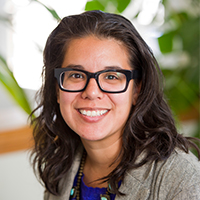
Financial Literacy Policy Update
Tori Young opens our March them with information that has shaped this addition to South Carolina High School Curriculum. Read more about Tori at the end of the blog.
Scrolling through social media, I often see young adults lamenting about why their teachers never taught them about taxes, credit, or interest rates. These adults feel lost and overwhelmed by the financial responsibility thrust upon them. While financial education may not look the same as it did fifteen years ago with Home Economics and Family and Consumer Science classes being defunded in several states, financial literacy is still integrated into many state standards through Social Studies and Freshman Readiness classes such as Economics or College and Career Readiness (CCR) classes. such as EPF.2.PR: “research and analyze the factors that impact personal income and long-term earning potential,” as an indicator in Economics and “students will be able to demonstrate productivity skills that will aid them in school and the workplace” as an objective in CCR.
Financial literacy is one of the few skills taught in schools that has a direct application to life for each student at the moment of learning it and in the future, regardless of their career goals. Knowing how to manage a budget, keep a healthy credit score, take out and pay off loans, and consider healthy investments are something every American adult has to consider on some scale every day. To understand income and expenses, a bank versus a credit union, and credit and debit are simple terms in financial literacy, but understanding them can greatly impact someone’s financial success. Knowing what options are available and what they mean helps consumers make smart financial decisions for themselves and their families, as well as avoid being taken advantage of by banks, loan companies, and businesses.
Lawmakers understand that when their constituents are financially literate, which means they can make better personal and business-related financial decisions, their states have greater economic success. Because of this, lawmakers over the past few years have begun to find ways to prioritize financial education through the standards of existing courses such as high school Economics and CCR courses that are already funded and required for graduation. Some states are even starting to require Personal Finance as a half-credit course, which teaches students how to balance a budget, plan for future expenses, understand banking and payment options, and choose appropriate loan and credit options for their personal goals. As financial literacy in middle and high school education is becoming a topic for our representatives, what should we know as teachers?
As of December of 2023, only 25 states require at least a half credit of personal finance, with five states and Washington D.C. not including personal finance in their standards (Nex Gen Personal Finance). However, the past two years have seen exponential growth in financial literacy in high school education because more politicians have seen the importance of young people becoming financially literate. In South Carolina, back in 2022, lawmakers passed 1.101 (SDE: Graduation Requirements) to require an additional half credit of Personal Finance for graduation beginning with the current freshman class of 2023-2024 (SC Dept of Ed). To meet this requirement, many high schools in SC now require Business Ed, CCR, or Social Studies teachers to step in to teach the course. Not only do these courses help students as individuals to be financially successful, but they help their communities and states as well when everyone has a better understanding of their finances. While only half of our country is requiring this skill to be taught, it is promising that more states will be joining them in the near future.
If you are wondering how this may apply to you as a middle or high school teacher, it has several impacts both in and out of the classroom! As a high school Economics teacher, I have found many skills from other disciplines necessary for my students to teach them personal finance effectively. We regularly calculate budgets, read data tables, and analyze graphs in class to analyze individual finance goals and overall economic patterns. Many of my students who struggle with personal finance struggle with mathematical and scientific literacy taught in the early years of schooling. For instance, the skills built in middle school science, learning about an X and Y axis, or in Algebra when dividing and working with decimals are crucial for students when they get to Personal Finance. You are building the infrastructure of financial literacy!
Financial Literacy makes up the second standard in the current SC Economics standards for social studies. The motive is that “financial literacy is imperative in making individual economic decisions regarding spending, careers, and setting short- and long-term financial goals. Decision-making and marginal analysis tools are essential in evaluating possible financial options. The ability to make wise choices can impact one’s standard of living and future earning potential” (2019 SSCCR). In order to achieve this goal, Economics teachers rely on a foundation of disciplinary literacy across the general education courses. From ELA, we ask students to research reliable sources and read news articles to find key information about the job market to determine if their career choice is feasible and realistic. From Mathematics, we require the ability to add and subtract to manage expenses and balance a budget as well as read a graph to evaluate the highs and lows of the cost of living. And from Science, we are gathering data from sources and testing different financial choices repeatedly to come to a sound conclusion.
We can all agree the weight of financial responsibility is heavy, for everyone. In turn, when these students graduate and begin their careers, whatever that may be, these students will have the knowledge needed to navigate financial independence. And maybe one day, when they are extremely wealthy, they will remember those of us who helped them get there. 😉
If you want to learn more about personal finance and financial literacy or access free curriculum, resources, and games for students, check out www.ngpf.org. If you are an Economics teacher and your state has implemented personal finance into your standards, check out www.econedlink.org and www.everfi.net for great resources and learning modules!
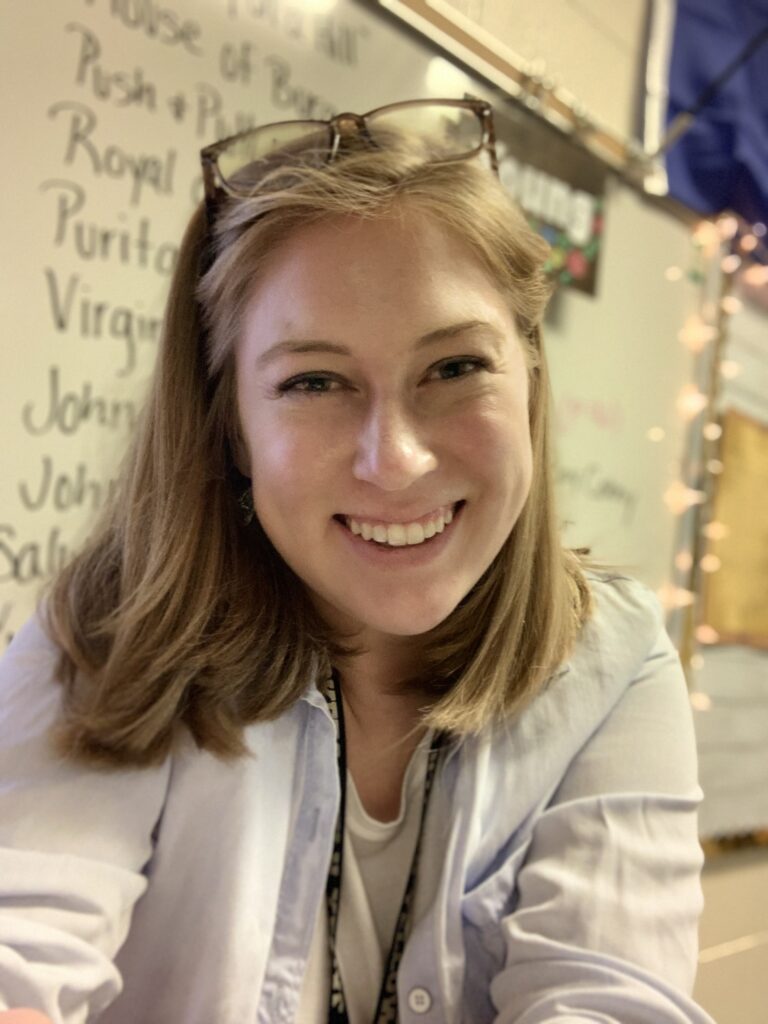
February’s webinar features Dr. Christina Dobbs, director of the English Education for Equity and Justice program at Boston University.
Click below
Palmetto State Literacy Conference
On February 23, 2024, LiD, 6-12 presented “What is Disciplinary Literacy” during a concurrent session of the PSLA Conference 2024. We invite those who attended to provide your feedback.
Click here: Feedback:

Classroom teacher Wanda Littlejohn shares how she engages striving readers using the Jigsaw Strategy. Read more about Wanda at the end of the blog.
My classroom teaching experience began over 20 years ago in an affluent school district where there were only a few elementary schools, two middle schools, and one high school. All of the schools focused on student academic growth and excellence, and they collaborated well together to ensure the content taught was aligned vertically and horizontally. Most of my students read fluently, were motivated to learn new things, and had similar experiences at home and at school. As a science teacher, I rarely had to provide interventions to gain student interest or to help them read and write like scientists. However, over the years I have learned that my experience as a classroom teacher is vastly different and not all students make it to high school knowing how to read and write fluently. According to the 2023 SC Ready test results, only 53% of eighth grade students either met or exceeded the reading expectations for the state while other subgroups such as pupils who are in poverty, Black, multilingual learners, and with disabilities performed at a rate of 42.3% or less (SCSDE, 2023). Because of these results, it is evident that students entering high school need reading support, and high school teachers need to be equipped with strategies that will assist students in all content areas, specifically in science. In this post, I will share how I utilized the jigsaw strategy as a means to facilitate success for striving readers a biology class.
In the January 4, 2022, issue of EdWeek Madeline Will states: “For the millions of students who struggle to read at grade level, every school day can bring feelings of anxiety, frustration, and shame” (p.1). The highly rigorous curricular standards outlining the knowledge and skills students should have by the end of each science course are designed to prepare students to predict outcomes, create procedures, analyze data, and draw conclusions. If over half of the students entering high school are unable to read at grade level, they are not able to meet the science classroom demands, ultimately leading to students’ feeling frustrated and lost in their science classes. Will (2022) goes on to state “…children who don’t receive appropriate support can fall behind in multiple classes, even though they are capable of intellectually understanding the material” (p. 2). If students are intellectually capable of understanding the material, scaffolds need to be put in place to bring that intellectual understanding out of them. Moreover, those strategies need to assist the striving reader’s comprehension of scientific text and vocabulary.
I had the pleasure of providing corrective instruction for several groups of students taking a Biology I course, many of whom were either multilingual learners or were students with a learning disability. During the lesson, we addressed the processes of cell division, cellular respiration, and photosynthesis and their importance to sustaining life. Because these concepts are so abstract, many students find them difficult to grasp. The teacher’s initial testing showed these students needed more time with the content because they were unable to clearly define the concepts or processes which had been taught nor were they able to identify models that represented each concept. It was evident from these data that students needed a way to better comprehend the vocabulary.
Addressing the concern of providing appropriate support for striving readers, I chose to use the jigsaw strategy to support these learners as we revisited the concepts stated above. In John Hattie’s research, the jigsaw strategy has a large effect on student achievement. Hattie proclaims in his book Visible Learning (2009) that self-instruction, organizing, and transforming are valuable tools to get students to be active in their learning and all create a high impact on student growth and achievement. The jigsaw strategy adds student discourse to the lesson and allows students to read, write, speak, and listen within a cooperative setting.
During the lesson, the students were assigned one of the four concepts (photosynthesis, cellular respiration, macromolecules, cell division). The students were given 20 minutes to read articles and listen to videos about their assigned topic. Each student was given a graphic organizer that supported their reading and listening and contained questions they had to answer during their individual research time to ensure they were obtaining the right information about their concepts. After their research phase was complete, the students were given 30 minutes to work in expert groups with other students who had the same concept so they could synthesize and organize their information. The students also had to create a model representing their concept and produce talking points they could use to explain their concept to others. It was imperative for me to conference with each group during the expert phase to ensure they were on the right track and they had accurate descriptions. The final step in the process was to jigsaw the students so each group contained an expert on each concept. During this phase, the students shared their models, while other students filled out a graphic organizer capturing the new information learned. As the jigsaw ended, one student indicated she really felt better about the concepts and she learned so much in the smaller group setting. At the close of the lesson, the students took a short assessment again on each concept.
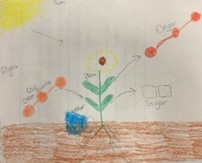
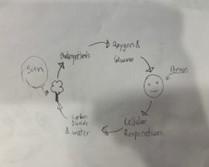
In Biology, the standards require students to create models to illustrate the processes of both cellular respiration and photosynthesis. The figures above show some of the students’ interpretations of those process after completing the jigsaw activity. It was evident from the figures above that the students had a general understanding of both processes. Figure 2 shows an even deeper understanding that both processes depend on each other and produce a continuous cycle.
In closing, striving readers, according to Will (2022), need a supportive classroom environment where they are welcomed to be risk takers and to have a growth mindset. During a jigsaw activity, there are a lot of moving parts and directions. The advice I would share is to be prepared to redirect students, repeat instructions, and visit each individual during each phase to ensure the students feel supported. Allowing students to research and read individually first gives them an opportunity to make meaning of things before they have to make meaning with a peer. Becoming an expert with a peer allows striving readers to reread and repeat information a second time, which enhances comprehension. I found the jigsaw strategy increased student knowledge of the concepts, gave them the confidence they needed to engage in discussion with their peers, and gave them the ability to complete the models shown in Figures 1 and 2. To learn more about the jigsaw strategy, click here.

January’s webinar features Dr. Ian O’Byrne, an associate professor of literacy education in the Teacher Education Department of the College of Charleston in South Carolina. He reminds us of the positive effect of open dialogue in the classroom when introducing new and controversial instructional tools such as artificial intelligence.
Click here to access the recording.

We welcome Ian O’Byrne as we open our blog and webinar theme: Artificial Intelligence. Please read more about Ian at the end of the blog.
Educators are currently struggling with a significant decision: Should AI be integrated into the writing process? Some worry that it could impede students’ writing skills. This leads to an important question: Have American schools ever been successful in teaching writing? When was writing education at its best? Where is it now? As educators, how can we strike the right balance?
There is no easy answer to these questions. The history of writing education in America is long and complex, and there have been many different approaches to teaching writing over the years. Schools now stand at a crossroads as AI-powered writing tools gain popularity. These technologies promise to enhance instruction and feedback but also raise concerns about over-reliance. To make sense of this balance, let’s first look at what exactly AI is.
What is Generative AI?
The intelligence of computers or software, as opposed to the intellect of people or animals, is known as artificial intelligence (AI). It is a branch of computer science that creates and investigates intelligent machines. Uses of artificial intelligence in the form of an agent, bot, or tool are generally labeled as AI. In the last year, we’ve seen an influx of AI in our lives as ChatGPT exploded on the scene. A far better way to view these tools is to refer to them as Generative AI and not simply as AI or ChatGPT.
Generative AI refers to advanced artificial intelligence systems that can generate new content on their own rather than just responding to user prompts. Models like GPT-3 (ChatGPT) can write entire essays, stories, and code after being trained on vast datasets. This means they may soon be capable of assisting students and teachers with writing tasks like brainstorming ideas, translating rough drafts into more polished work, answering content questions, and even providing feedback.
However, generative AI also raises challenges. Teachers will need to focus on developing original thinking skills rather than knowledge recall, and concerns around plagiarism, creativity, and voice must be addressed. When used judiciously, generative writing tools could enhance instruction and revision. But ultimately, writing education should emphasize the uniquely human aspects of imagination, analysis, and persuasive communication that AI cannot replicate.
What about writing instruction?
The history of writing education in America is a mixed bag. Some of the earliest writing instruction in America took place in one-room schoolhouses, where students were taught the basics of grammar and spelling. Teaching pupils to write included teaching them how to form letters, spell words, and have readable, if not exquisite, handwriting. Writing instruction in American schools began in the late 1800s as colleges started requiring admissions essays. This mostly focused on preparing an elite group of males with a formulaic, five-paragraph structure that developed basic literacy but limited creativity.
Students were required to master the five-paragraph essay, but this method sometimes stifled originality and expression. While it did instill basic writing skills, it may not have nurtured a deep love for writing. Some shifts came in the 1960s and 1970s as the process approach emerged, emphasizing planning, drafting, revising, etc. The National Writing Project (NWP) raised awareness about the ways that writing changes throughout a person’s life, the impact of a range of school and non-school experiences on writing, and the interactions between writing in school and these lived experiences.
Throughout the 20th century, writing instruction continued to follow a rigid, formulaic approach, emphasizing grammar and structure over creativity and critical thinking. Some of this focus on the importance of grammar and mechanics in writing instruction was due in part to the rise of standardized testing, which required students to demonstrate their mastery of these skills. Students were inundated with topic sentences, transitional phrases, and conclusion restatements in the omnipresent five-paragraph essay. Although this method guaranteed a basic level of literacy, creativity and enthusiasm were frequently sacrificed.
In recent years, the tide seems to have turned in favor of more innovation, voice, and freedom of expression. There has been a growing movement to move away from traditional grammar-based approaches to writing instruction and to focus more on helping students develop their critical thinking and problem-solving skills. Current best practices involve process-based instruction tailored to students’ needs and interests. Assignments also incorporate more authentic, real-world writing purposes and audiences.
Yet, with this varied history in the focus, goals, and implementation of writing instruction, the teaching of writing has not changed in many schools. Debates continue around balancing process approaches with quality outcomes. Standardized writing tests have been criticized for over-emphasizing grammar at the expense of actual writing skills. Researching writing development, including spelling patterns and the connections between writing, speaking, and reading, is a constant challenge. Other ongoing issues include managing teachers’ heavy workloads, integrating technology for composition and collaboration, and closing achievement gaps for minority students. Simultaneously, some educators find it difficult to strike a balance between grammar and real-world communication possibilities.
Writing Education and Generative AI
Generative AI tools hold great promise, but they also pose risks. Over-scaffolded writing assignments might fail to teach core composition skills. Targeted AI feedback could improve self-editing and reworking while maintaining the humanity of audience awareness and personal narrative. Students can receive immediate, personalized feedback thanks to technologies like AI co-writers, grammar and style checks, and predictive text. Students could become overly dependent on AI recommendations rather than developing their own voice and style. Essay scoring algorithms even mimic the evaluation procedure. Schools should prioritize balancing rather than seeing innovation as a substitute for efficient practice.
As educators and researchers, we need to better understand the appropriate role for writing technologies. How can AI augmentation best complement time-tested instructional methods? Which specific skills should remain the focus for teachers and students? Even with the help of intelligent recommendation systems, collaborative discourse and knowledge might still be developed through writing workshops and reading circles. Both tradition and technology have their place.
There is no one-size-fits-all approach to writing instruction, and the best approach for a particular student will depend on their individual needs. It is important to note that writing is a skill that takes time and practice to develop. Students will not become good writers overnight. However, with effective instruction, all students can learn to write well. There are some key principles that we can use to help guide future explorations of writing instruction and AI. These principles include:
- A focus on the writing process as opposed to product, from prewriting to revision
- Opportunities for students to write for a variety of purposes and audiences
- Feedback from teachers, peers, and other agents
- Numerous, varied chances for students to hone their writing abilities
As leaders in literacy, we have the chance to mentor the upcoming generation of authors. When writing instruction veered too much in the direction of either freedom or structure, it went awry. We can provide kids with the best of both worlds by ethically incorporating AI as a tool for improved results. Teaching the craft, generating ideas, finding one’s voice, and fostering a lifelong love of writing continue to be our guiding values. Technology can support this objective if used wisely. We can find the ideal equilibrium if we act carefully and wisely.


Christy Howard returns with additional thoughts through the eyes of a literacy educator who works with preservice and in-service teachers as they navigate the changing expectations of education. Read more about Christy at the end of her blog.
Through my work as a literacy educator, I have the opportunity to work with preservice and in-service teachers as they navigate the changing expectations of education. I also work with school support staff, administrators and district-level curriculum leaders. Through this work I have recently been engaged in many conversations around curriculum materials and text selection for classrooms. Educators want to know how to engage students in the learning process, and how to help them in their journey to becoming critical consumers of texts — especially in a world where they are bombarded with so much information. Many secondary teachers recognize the need to look beyond the textbook for classroom materials, often acknowledging content area textbooks fail to provide all the information needed to support student learning. Many of them also acknowledge textbooks provide incomplete stories. My response to these educators as I nod in agreement is, “Let’s take a look at the role of counternarratives in your materials and text selection process.”
What are counternarratives?
There are many definitions of counternarratives. Here I would like to share the definition from Tricia Ebarvia’s new book, Get Free. She shares:
“A counternarrative is a story that stands in contrast to and challenges the values, beliefs and an established dominant narrative. Often counternarratives do this by focusing on the perspectives that are missing, marginalized, or actively erased from the dominant narrative” (Ebarvia, 2023, p.3).
This definition stands out to me because of the discussion of erasure. When I think about my conversations with educators and their stories of how some of them are dealing with curriculum mandates and banned books in their districts, this is an example of how perspectives are actively erased from the dominant narrative. Curriculum mandates and book bans often minimize access to the ideas, experiences and histories of marginalized groups. This is a clear reason why we need to provide space for multiple perspectives, allowing students to engage with both dominant narratives and counternarratives.
Why are counternarratives important?
Stories that only show the dominant perspective can be harmful. Students need exposure to multiple perspectives. These perspectives are not always readily available in neighborhoods and families. Tatum (2017) reminds us, Many of us grow up in neighborhoods where we had limited opportunities to interact with people different from our own families… Consequently, most of the early information we receive about “others”– people racially, religiously, or socioeconomically different from ourselves–does not come as a result of firsthand experience. The second hand information we receive has often been distorted, shaped by cultural stereotypes, and left incomplete (p. 84).
This incomplete information can lead to harmful actions. For example, incomplete, distorted information shaped by cultural stereotypes has led to physical and emotional harm against people in this country. We have seen this highlighted in news stories about hate crimes against marginalized groups, that in many cases have led to death. These incomplete stories and distorted stereotypes can be addressed through counternarratives in our classrooms, and if we believe dominant narratives can be harmful, it is easy to believe that perhaps counternarratives can be healing.
Counternarratives can also help us disrupt deficit perspectives and harmful narratives about people and places. For so long in the publishing world, we saw so few books written by and about the lives and experiences of people of color. This has been well documented by the Cooperative Children’s Book Center (2018). With this approach to publishing, the lives, experiences, and voices of marginalized people have been silenced. Tatum (2017) describes an experience where a preservice English teacher commented that she had never learned about any Black authors in her English courses and was concerned she would have difficulty teaching them if she had not learned about them in her schooling. A classmate commented, “It’s not my fault that Blacks don’t write books” (p. 85). This narrative is harmful, inaccurate, and is rooted in a deficit perspective. We must provide access to books for students that serve as counternarratives to this mindset, showing that we indeed have successful, amazing, authors across marginalized groups writing award-winning stories and creating award-winning film, art, poetry, music and dance. These counternarratives can show our students they, too, can be successful, amazing creators if they so choose to embrace that identity.
Counternarratives in Classrooms
There are many learning experiences you can provide for students to engage with counternarratives. I believe it’s important for students to read counternarratives. I also think it’s important for them to have opportunities to write counternarratives as well. Christensen (2017) asserts, “In writing about themselves, students learn to praise their beauty that the world overlooks or cannot see” (p. 82). Writing experiences through this lens allow students to write against false or inaccurate narratives, take ownership of their writing and show their beauty to the world. Here I want to share some opportunities for both reading and writing with you.
Children’s Books as Counternarratives
We know that children are often exposed to negative dominant perspectives through children’s stories, cartoons, and movies, where they have seen inaccurate representations of Indigenous People, as women portrayed as needing to be rescued, and People of Color, as lazy or villains. As educators, we have the opportunity to disrupt these narratives by using well-chosen, multi-perspective texts in our classrooms as counternarratives. At the bottom of this post, I have listed picture books, middle grade books, and young adult books that can be used as counternarratives. These are all beautiful stories, several of them focusing on love, joy, and community, while also speaking back to the dominant perspectives of marginalized people.
As we consider using such books in our classrooms, there are so many resources that can guide us in choosing texts, such as Diversifying Your Classroom Book Collections? Avoid these 7 Pitfalls. In addition, Ebarvia (2023) provides some questions to guide our thinking as well:
- Can this text provide meaningful insight to students about identities with which they are unfamiliar?
- In what ways can this text help to develop a positive social identity for my students?
- How can this text challenge incomplete or harmful dominant narratives about different identities?
- Does this writer treat their subject with complexity and nuance and avoid stereotypes?
- What does this text not do or include that I will have to supplement with another text? What counternarratives will my students need after this text?
I hope through these resources, you find some helpful texts to meet the needs of your students and engage them in exploring counternarratives in your classrooms.
Visual Autobiographies
Visual autobiographies are an opportunity for students to engage in creating counternarratives. Students can generate multimodal projects that include items such as photos, drawings, poems, songs, and videos. This type of assignment is open for students in a way that they are able to choose what they want to present and how they want to present it. They are able to share their identity, culture, history, beauty, and brilliance. They begin by exploring the dominant narratives that might be told about them, parts of their identities or their communities. They, then, consider how they can create visual representations as counternarratives to these dominant narratives.
Talking Back
Talking Back is an activity Christenson (2017) shares where she asks students to “criticize commercially produced images about the way they should look, sound, or act” (p. 82) and to speak back to these perspectives through poetry. In her example, she uses the poem, “what the mirror said” by Lucille Clifton. I have also used Maya Angelou’s Still I Rise poem as a mentor text. Additionally, I have created a poem as a mentor text for this assignment so students can see my thinking in this process as well. As an educator, what would you like to “talk back” to? What texts could you use with your students as representations of “talking back?”
Reflections of…
I believe in self-reflection. It is an important piece of all of my instructional practices. When I consider what it means to include counternarratives in my classroom, these are the questions I am asking myself. I encourage you to join me in reflection as you consider integrating counternarratives into your classrooms.
- What is the role dominant narratives have played in my life?
- What is my role in promoting the dominant narrative in classroom spaces? How have I believed or accepted deficit dominant narratives?
- How can I challenge the negative perceptions in dominant narratives?
- How do I use narratives to help students construct new understandings of the world?
- Whose experiences and voices are centered in my classroom?
- Whose experiences and voices are marginalized?
- Whose voices are missing? What does this mean? Why does this matter?
- How can I continue to provide space for my students to “talk back?”
Children’s Books and Professional Resources
Picture books
We Are Still Here: Native American Truths Everyone Should Know by Traci Sorell
Something Beautiful by Sharon Denni Wyeth
I Am Every Good Thing by Derrick Barnes
We Are Water Protectors by Carole Lindstrom
My Papi Has a Motorcycle by Isabel Quintero
Ada Twist, Scientist by Andrea Beaty
Middle Grade books
Mascot by Charles Watters and Traci Sorell
Some Places More Than Others by Renee Watson
Indian No More by Charlene Willing McManis and Traci Sorell
Harbor Me by Jacqueline Woodson
Swim Team by Johnnie Christmas
Young Adult books
Clap When You Land by Elizabeth Acevedo
The Silence that Binds Us by Joanna Ho
The 57 Bus by Dashka Slater
Professional Resources
Christensen, L. (2017). Reading, writing, and rising up: Teaching about social justice and the power of the written word. (2nd ed.) Rethinking Schools.
Muhammad, G. (2020). Cultivating genius: An equity framework for culturally and historically responsive literacy. New York, NY: Scholastic.
References
Christensen, L. (2017). Reading, writing, and rising up: Teaching about social justice and the power of the written word. (2nd ed.) Rethinking Schools.
Cooperative Children’s Book Center. (2018). Publishing statistics on children’s books about people of color and First/Native nations and by people of color and First/Native nations: Authors and illustrators. Madison, WI: Cooperative Children’s Book Center, University of Wisconsin-Madison. Retrieved from https://ccbc.education.wisc.edu/literature-resources/ccbc-diversity-statistics/books-by-and-or-about-poc-2018/
DeHart, J., & Staff, L. for J. (n.d.). Countering the narrative. Learning for Justice.
Ebarvia, T. (2024). Get free: Anti-bias literacy instruction for stronger readers, writers, and thinkers. Corwin.
Muhammad, G. (2020). Cultivating genius: An equity framework for culturally and historically responsive literacy. New York, NY: Scholastic.
Tatum, B. D. (2017). Why are all the Black kids sitting together in the cafeteria?: And other conversations about race. New York: Basic Books

This webinar features Dr. Christy Howard, Associate Professor in the Department of Literacy Studies, English, Education, and History Education at East Carolina University. She encourages us to be mindful advocates against inaccurate stories, images, and stereotypes about marginalized people.
Click Here to access.

This week we welcome Heather Waymouth and one of her students, Hery Castro as they share the positive effects of rethinking the relationship between disciplinary literacy and equity, expertise, and inclusive education. Read more about Heather and Hery at the end of the blog
I (Heather) came into the field of disciplinary literacy as an excited doctoral student who finally saw a way that my certifications in science and literacy could make sense together. I’d spent years thinking about science as a science teacher and literacy as a literacy teacher, and never the two should mix. That I could now teach students to read science like a scientist and history like a historian felt like putting on a comfortable, old sweater.
Yet, just as my old, comfortable sweater has some holes, so, too, does disciplinary literacy. Heller (2011) and Collin (2014) encourage educators to question what counts as a discipline and if our intent really is to mold students into “little experts.” Saying that we are apprenticing students into the literacy practices of disciplinary experts should cause us to examine who counts as an expert.
That question didn’t meaningfully exist for me until I watched the movie Dark Waters (Haynes, 2019). At the film’s core is a farmer, Wilbur Tennant, seeking to sue DuPont over environmental contamination. He’s reached out to the company several times, they’ve conducted a study of his land and their nearby disposal area, and DuPont’s scientists have claimed there’s nothing wrong. Yet, Tennant has gathered his own data. When his lawyer visits the farm, there’s a poignant scene in which Tennant pulls deformed cow organs wrapped in tinfoil from his freezer, deformed hooves stored in a jar, and a video of himself conducting his own necropsy. However, because Tennant is “just a farmer,” his lived experience and expertise aren’t initially seen as “expert” enough for the law firm to justify taking on his case.
I began to rethink my devotion to disciplinary literacy. Was our focus on a narrow definition of experts and expertise helping to build and maintain the world in which Wilbur Tennant’s decades of intimate knowledge didn’t count? Rather than seek an answer from literacy scholars, I dove into science education research. After all, the newly crafted Next Generation Science Standards (NGSS) were intended to promote equitable learning opportunities for ALL students (Lee, Miller & Januszyk, 2015).
In science, I found a conceptualization of literacy that gave me hope for a more inclusive disciplinary literacy. The National Academies of Science, Engineering and Medicine published a report on Science Literacy which defined it across three levels: individual, community, and society (2016). Here, literacy wasn’t a form of property able to be possessed by some folks and not others. Sure, individuals’ mastery of reading, writing, and oral discourse is a necessary consideration of literacy within this model, but it isn’t the end goal. Considering how communities – especially those historically denied access to quality science education – engage in literacy as collective praxis (Roth & Lee, 2002) by bringing their diverse voices, experiences, and literacies together – provided me with a vision for disciplinary instruction which could introduce experts’ literacies and value other forms of literacy and expertise as equally valid.
Then I found Windschitl, Thompson, and Braaten’s (2018) Ambitious Science Teaching. My heart sang – here was a framework that balanced attention to equity and rigor. Not only that, it established students’ collective sensemaking as the objective of science learning. Throughout my dissertation, I observed a group of middle school science teachers using Ambitious Science Teaching to breathe life into the NGSS and had the pleasure of hearing, in their words, how this type of teaching was creating space for all students to engage in sensemaking. While even in their expert teaching, opportunities existed for a closer consideration of equity as foundational rather than supplemental to science learning, I knew I had found my soapbox to stand upon.
Now that I work full-time preparing pre-service teachers, I do everything I can to further the possibilities for equity and inclusion in disciplinary literacy. I have taken up equitable sensemaking (Calabrese Barton & Tan, 2019) as the foundation of my undergraduate class on literacy in the content areas. Throughout the semester, preservice teachers work in small groups to craft a unit plan in a content area other than ELA: science, math, engineering or social studies. We adopt the ambitious science teaching framework (Windschitl, Thompson, & Braaten, 2018), understanding that while this framework was designed for science, it can be applied to any discipline. Preservice teacher teams identify an inquiry question ripe for exploration from multiple viewpoints and for incorporation of social justice and equity, such as “Why do we get sick?” Then, they map an explanation of that phenomenon, incorporating multiple viewpoints and opportunities for students to engage with new ideas, rather than be taught (told) those ideas. As my desire is for authentic learning to drive the bus, I don’t introduce standards until after the ideas mapping process has begun. Students map content area standards first and subsequently “engineer” (Moje, 2015) opportunities for literacy development within their unfolding storyline (Reiser et al., 2021).
Considering equity as foundational is often a new concept for my preservice teachers, given that most are white and from middle class backgrounds. We spend several classes learning what it might look like to incorporate perspectives other than our own early in the planning process. The works of three scholars are particularly helpful to us. While students are developing their unit’s question, we listen to Dr. Danny Morales Doyle’s interview with Abolition Science in which he discussed using social justice science issues, like pollution from a local factory, to ground high school chemistry instruction. Several days into unit planning, students use the twelve questions Dr. Gholdy Muhammad outlined in her AMLE blog post to (re)consider the cultural and historical relevance of their unit. To illustrate what an equitable sensemaking activity that draws upon diverse voices might look like, I conduct a fishbowl discussion in which each student embodies a chapter of Dr. Robin Wall Kimmerer’s (2013) Braiding Sweetgrass, using three guiding questions: What counts as knowledge/expertise? Whose expertise matters? How do we use the knowledge we are gaining from this text to impact our teaching?
The units my students are ultimately able to build astound me. I’ve seen a math unit on how to affordably feed various sized groups, a social studies unit on why we haven’t yet had a woman elected as president, and all sorts of other units incorporating joyful learning, literacy in service to disciplinary learning, incorporations of diverse viewpoints, and opportunities for students’ identities and experiences to inform ongoing learning. But, as I heard on Reading Rainbow as a child of the 90’s, “You don’t have to take my word for it.” Hery Castro is one of my students currently engaging in planning for equitable sensemaking. I’ll let him tell you what it’s like:
Including equitable sensemaking in my unit plan caused me to reshape my thinking, and put critical literacy first, alongside relatable science phenomena. Although there was some slight confusion on what exactly Dr. Waymouth was looking for, I loved working on my assignment. As a person of color who has experienced difficulties with teachers understanding where I’m coming from, I’ve always known that I wanted more perspectives like mine included in school. Being told that it’s not only possible, but necessary to include them in this science unit (a subject area I don’t intend to teach), was affirming.
By reshaping the question of equitable sensemaking into “how can we have this relate to students’ lives outside of the classroom” and “how can we get kids to think about the impact of these scientific phenomena in communities and lifestyles other than their own”, I realized there are countless answers and options for engagement. We started with a universal question: “why do we get sick?” and broke it into more universally experienced questions like “how do diseases spread?” and “what can we do to prevent them?”
These driving questions are great; however, equitable sensemaking asks that we take a question that could be answered with just a personal tidbit and transform it into something that requires scientific and social research. My group added “why do some diseases affect some communities more than others?” and “How does access impact care?” At this point, I could tell we were approaching equity, as students would get the chance to talk about various perspectives in addition to their own lived experiences.
I found that I used this equitable sensemaking framework as the basis for each question and activity I planned for my unit. If I knew I wanted students to question why certain areas or groups of peoples are affected by a disease more than others, I knew I needed to have a lesson about how disease spreads and one that requires students to dive deeper, asking and answering the critical questions through activity. Repeating this process for each driving question, and crafting more and more activities that build upon the students’ developing understanding of both biological and social science, led to a unit plan that is rich with equitable sensemaking. This balance of social justice and grounded scientific questioning has led my group to craft something that not only reshaped our ideas of teaching, but will allow us to help create a new generation of critical thinkers in not only science, but across all domains.
References
Calabrese Barton, A., & Tan, E. (2019). Designing for rightful presence in STEM: The role of making present practices. Journal of the Learning Sciences, 28(4-5), 616-658.
Collin, R. (2014). A Bernsteinian analysis of content area literacy. Journal of Literacy Research, 46(3), 306-329.
Haynes, T. (Director). (2019). Dark Waters [Film]. Participant Media.
Heller, R. (2011). In praise of amateurism: A friendly critique of Moje’s “call for change” in secondary literacy. Journal of Adolescent and Adult Literacy, 54(4) 267-273.
Kimmer, R. W. (2013). Braiding sweetgrass: Indigenous wisdom, scientific knowledge, and the teaching of plants. Milkweed Editions.
Moje, E. B. (2015). Doing and teaching disciplinary literacy with adolescent learners: A social and cultural enterprise. Harvard Educational Review, 85(2), 254-278.
National Academies of Sciences, Engineering, and Medicine. (2016). Science literacy: Concepts, contexts, and consequences. National Academies Press.
Lee, O., Miller, E., & Januszyk, R. (Eds.). (2015). NGSS For All Students. NSTA Press.
Reiser, B. J., Novak, M., McGill, T. A. & Penuel, W. R. (2021). Storyline unites: An instructional
model to support coherence from the students’ perspective. Journal of Science Teacher Education, 32(7), 805-829.
Roth, W. M., & Lee, S. (2002). Scientific literacy as collective praxis. Public understanding of science, 11(1), 33.
Windschitl, M., Thompson, J., & Braaten, M. (2018). Ambitious science teaching. Harvard Education Press.
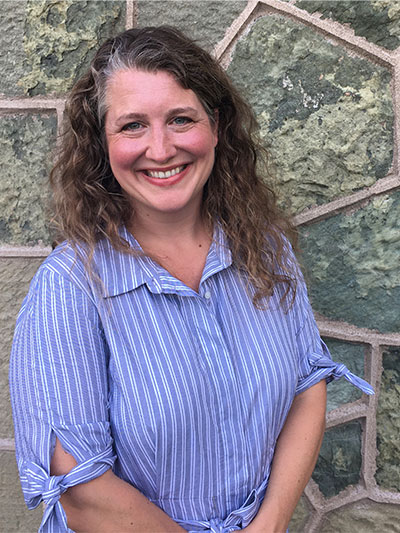


As a follow up to her webinar, Brooke Hardin expands on her resources for using multi-modal writing responses to engage students in writing.
In twenty years of teaching English Language Arts, helping students discover their “writerly life” has remained a passion. To live a writerly life means that individuals write often and with a fair amount of ease, that they see their everyday ordinary lives brimming with writing topics, and that they can use writing to reflect their ideas and potentially gain new ones. In order to begin to live a writerly life, one must be motivated to write. As teachers, engaging students in writing tasks can often be a challenge, but certain elements increase both students’ motivation for writing and their efficacy for writing tasks. Student choice in topic, modeling of strategies and techniques, consistent time to share, give, and receive feedback on writing, and invitations to write in varying modes have all been identified as ways to more likely engage students in writing. This post serves to provide strategies related to the latter idea, using various modes for writing and how these modes might inspire students to write and deepen their knowledge of disciplinary content.
What is Multimodal Writing? What Might it Look/Sound Like?
Multimodal texts are print-based and digital texts using more than one mode or semiotic resource to present meaning; mode is defined as a socio culturally formed resource to make meaning (Kress, 1010; Serafini, 2015). Authors have been exploring multimodal response for over a decade and have seen its potential to engage students in personal response and critical analysis of literature, while also developing their appreciation of genres (Dalton & Grisham, 2013). Expanding students’ literacy palette to include the modes of image, video, audio, and writing offers them more choices for how to develop and express their thinking about reading. When readers write about, interpret, or respond in some fashion to their transaction with a text, a new text is produced as the reader-turns-writer; that is, a writer or creator who seeks to express that experience with the text (Rosenblatt, 1994). Writing in a poetic form or creating a digital design as an aesthetic response to the reading positions the reader-turned-writer to adopt an aesthetic stance in which the student’s attention is focused on the lived-through experience of the reading: the emotions, moods, intuitions, attitudes, and tensions connected to the ideas and characters embodied in the text (Rosenblatt, 1994). Thus, one of the benefits of multimodal writing tasks is their potential to deepen comprehension and/or content learning.
One strategy for multimodal writing is called a half-and-half portrait (see Image 1). To create this piece, a student would first “write” the portrait about themselves. The portrait is a visual representation of an individual done by drawing one half of the person’s face using physical features (i.e., hair style, eye color, nose shape) and then filling in the other half of the face with images, quotes, or other ideas that relate to the person’s attributes, interests, life experiences. Once a student has created a half-and-half portrait about themselves, they can apply the strategy to a character from text, historical or present-day figure, or any other person. For example, the physical side of the portrait is created using the features visualized by the reader based on descriptions in the text. The other half of the character’s face uses images and other ideas related to the character and inspired by evidence from the text. For example, students might read the middle grades novel Refugee by Alan Gratz, which portrays the refugee experience of three distinct, fictional adolescent characters. Students reading this novel could further explore and demonstrate their understanding of these characters through the creation of a half-and-half portrait (see Image 2).

Image 1: Personal ½ and ½ Portrait (created by author)
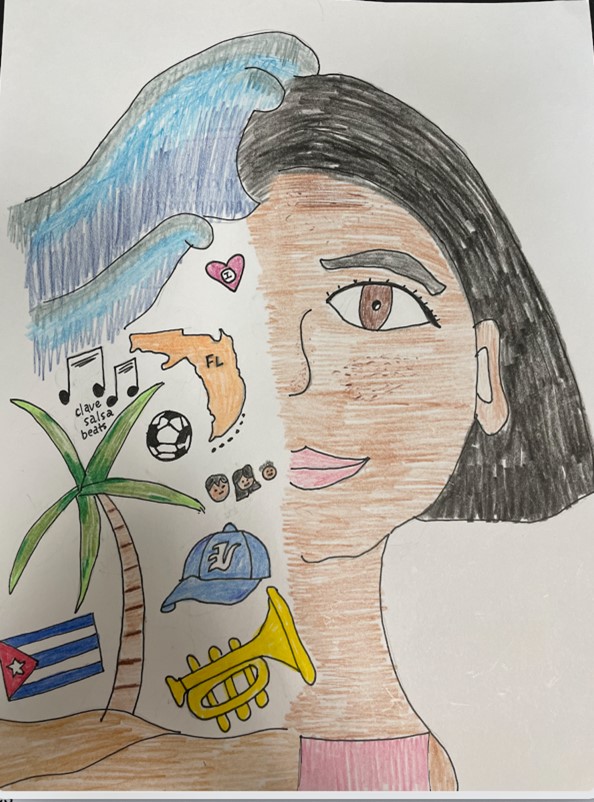
Image 2: Isabel from Refugee (created by author)
In addition to creating the portraits, students can also create video or audio recordings that explain the thinking behind their multimodal writings. Teachers might ask students to discuss both the materials used to create the portraits and the ideas represented in the portraits. In multimodal writing using a visual art form such as this portrait, selection of materials and images or quotes used should be as intentional as word choice is in written texts. An example of my explanation for my half-and-half portrait can be found using this link.
As with any new genre of writing, students need mentor texts they can reference for ideas and inspiration. Picture books, especially those that have been recognized for their illustrations, serve as some of my favorite mentor texts for multimodal writing with visual art (see Images 3 and 4).
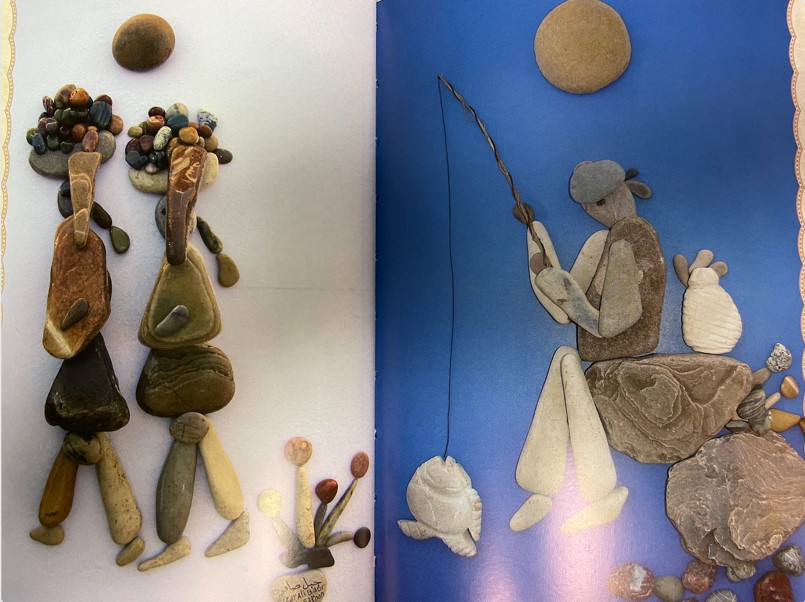
Image 3: Illustrations made with stones in Stepping Stones: A Refugee FAmily’s Journey by Margaret Ruurs
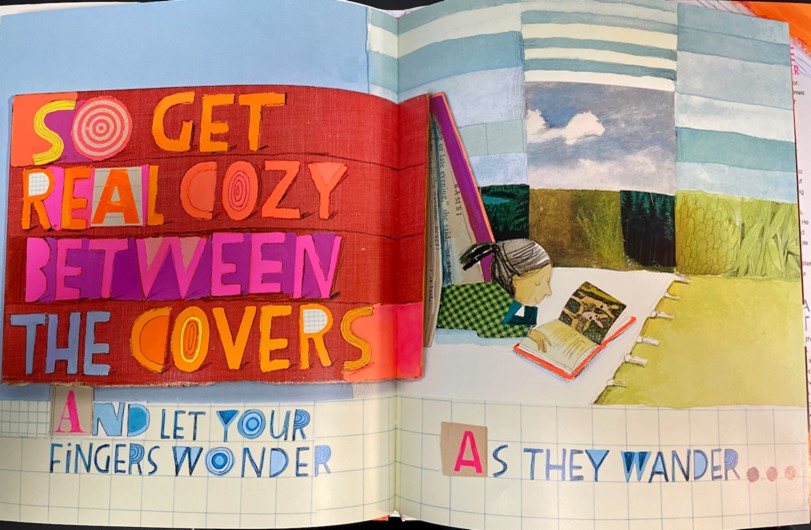
Image 4:
Illustrations made with layered collage featuring book pages,
tattered book covers, neon paints, and cloth in How to Read a
Book by Kwame Alexander and illustrated by Melissa Sweet
Engaging Students in Writing with Poetry
Poetry is another genre that often engages students in writing tasks. Poetry is subjective and its structure can vary. Some forms, like haiku, have a particular form, but poetry can also be as simples as a collection of a person’s favorite words. The rules of writing become more relaxed in different types of poems, which allows students to tap into their creativity and use their voice to play with words, line breaks, and the appearance of the poem. Many poems are what I call “bite-sized;” thus, they are also less intimidating to write for more reluctant writers.
Definition Poems
Definition poems are a specific type of poetry that follows a form but also holds space for students to use craft moves and have agency with the writing. This form of poetry is inspired by some of the pages from the middle grade novel The Crossover by Kwame Alexander (see Image 5). Written in verse, the novel features several poetic styles, including definition poems, that might serve as mentor texts for students poetic writing. The definition poem invites students to engage in writing while also enhancing their vocabulary knowledge and using learned content to create something new.
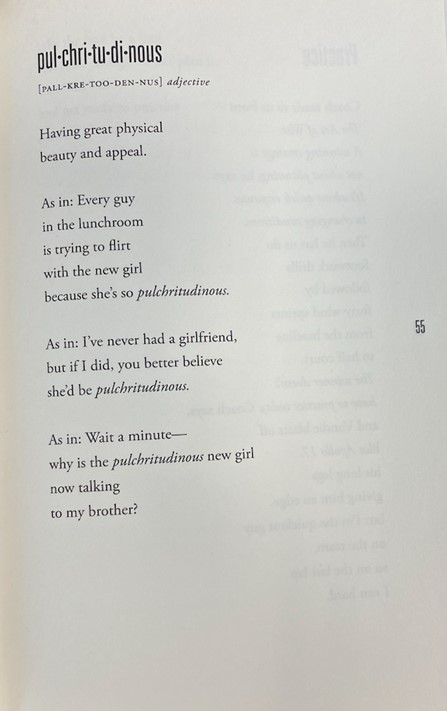
Image 5: Definition poem from The Crossover
When teaching students to write definition poems, teachers should use the same principles they would use with teaching any other genre. Reference the mentor text, such as one of Alexander’s poems from The Crossover, and engage students in inquiry by asking them to take notice of how the author wrote the poem – that is, to think about and name aloud the “ingredients” used in the poem and what might be required for someone else to write the same style of poem. For example, teachers would point out how each stanza begins with “As in:” and how the vocabulary term is used in each stanza. Teachers might use a shared writing approach to co-author a definition poem with the whole class and invite students to co-author this kind of poem in pairs before they write one independently. Again, this kind of poem can be used with vocabulary from novels students read and to other content areas. See Image 6 for an example definition poem written about the math term parallel. As seen in the example, the poem offers students the opportunity to sustain their thinking about a word and its meaning and invites them to see how vocabulary terms are relevant to their lives. Additionally, these kinds of poems can serve as a piece of writing in a larger multimodal piece. For example, students might be invited to illustrate each stanza of the poem to add a visual layer.
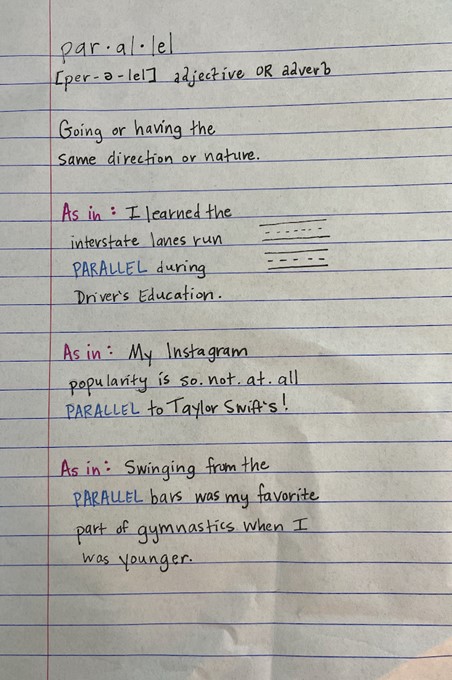
Image 6: Example definition poem (created by author)
Golden Shovel Poems
Golden shovel poems are a poetic form created by Terrance Hayes and inspired by Gwendolyn Brooks’ poem, “We Real Cool.” To write a golden shovel poem, the writer must do the following:
- Take a line or lines from a poem you like.
- Use each word in the line as the end word in each line of your poem.
- Keep the words in order.
- Give credit to the original poet.
- The new poem does not need to be about the same subject as the original poem, but they can be related in some way if the writer chooses to do so.
Inspired by Terrance Hayes, Nikki Giovanni wrote the book One Last Word, which is a book of golden shovel poems about the Harlem Renaissance. Using two of the poems from this book as mentor text (see Images 7 and 8), teachers can help students see how the poem is written and gain inspiration for their own writing.
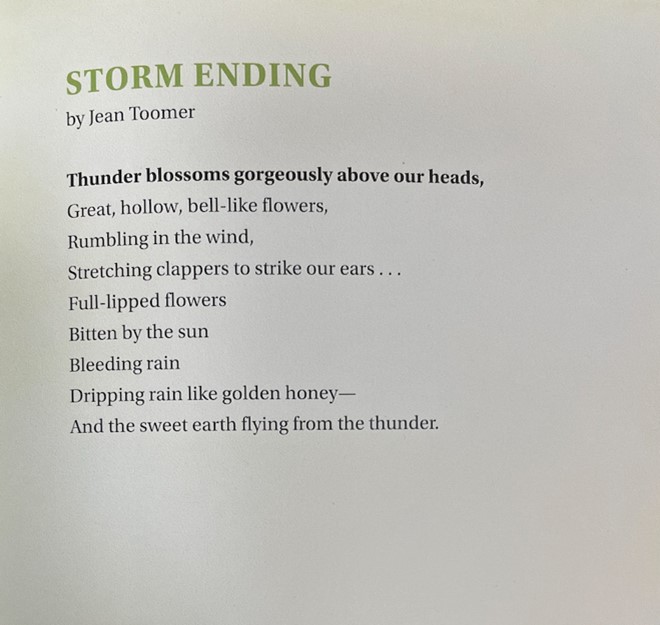
Image 7: “Storm Ending” from One Last Word
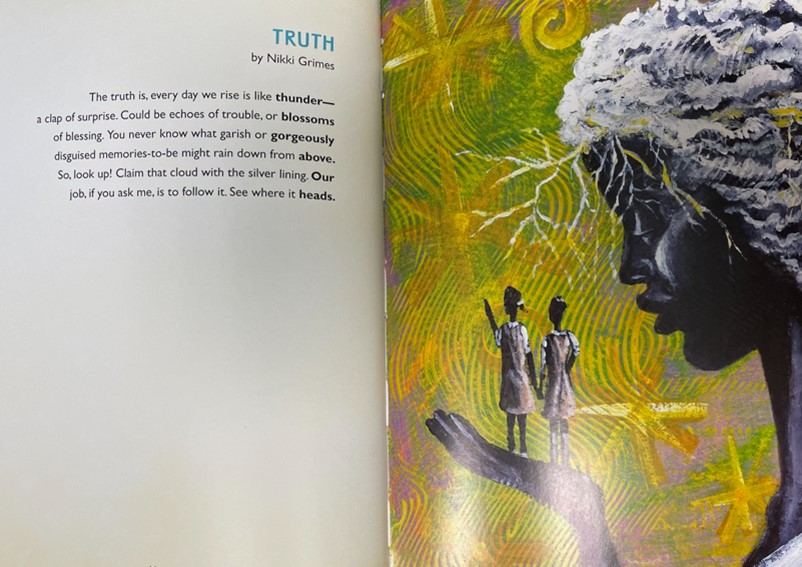
Image 8: “Truth,” a poem written by Nikki Giovanni using a line from “Storm Ending” by Jean Toomer
Teachers should immerse students in reading many different poems, invite them to bring in poems – including song lyrics – that they admire, to gain ideas and inspiration for writing their own golden shovel poems. Again, teachers may want to scaffold this kind of writing and co-author poems with students in a whole group setting before tasking students with writing one on their own. Golden shovel poems are complex but also provide students an opportunity to play with word choice, syntax, line breaks, and be creative in their writing. Inspired by a poem from Mary Oliver’s Dog Songs, I show students my own attempt at this poetic form (See Images 9 and 10).
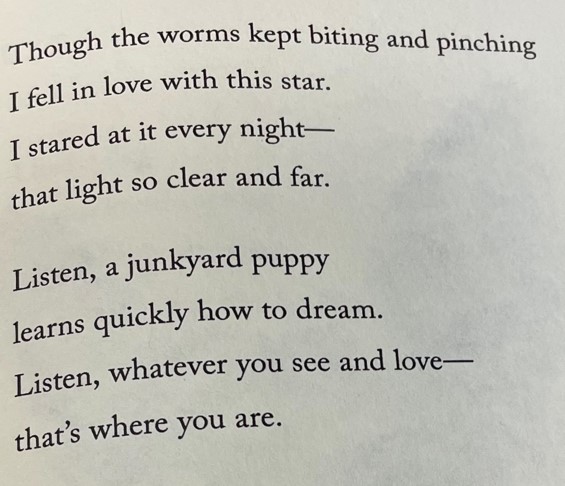
Image 9: Excerpt from “Luke’s Junkyard Song” by Mary Oliver
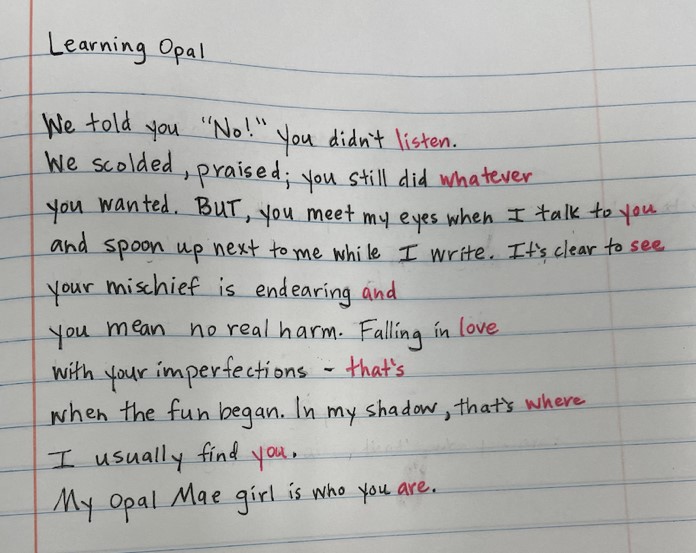
Image 10: Golden shovel using the last two lines from “Luke’s Junkyard Song” (created by author)
Final Thoughts
No matter the strategy used, teachers must remember to embrace vulnerability and write alongside of students, both modeling the techniques and making the cognitive side of writing – word choice decisions, art medium choices, etc. – become evident and accessible for students. Writers need to see and hear other writers engaged in writing to discern the process and be inspired. Writers also need room for creativity. Each of the strategies offered here provides space for creativity and the opportunity for students to express themselves while also learning and showing their content knowledge.
References
Kress, G. (2010). Multimodality: A social semiotic approach to contemporary communication. London, UK: Routledge.
Rosenblatt, L. M. (1994). The transactional theory of reading and writing. In R. Ruddell et al. (Eds.), Theoretical models and processes of reading (4th ed). Newark, DE: International Reading Association.
Serafini, F. (2015). Multimodal literacy: From theories to practices. Language Arts, 92(6), 412-423.
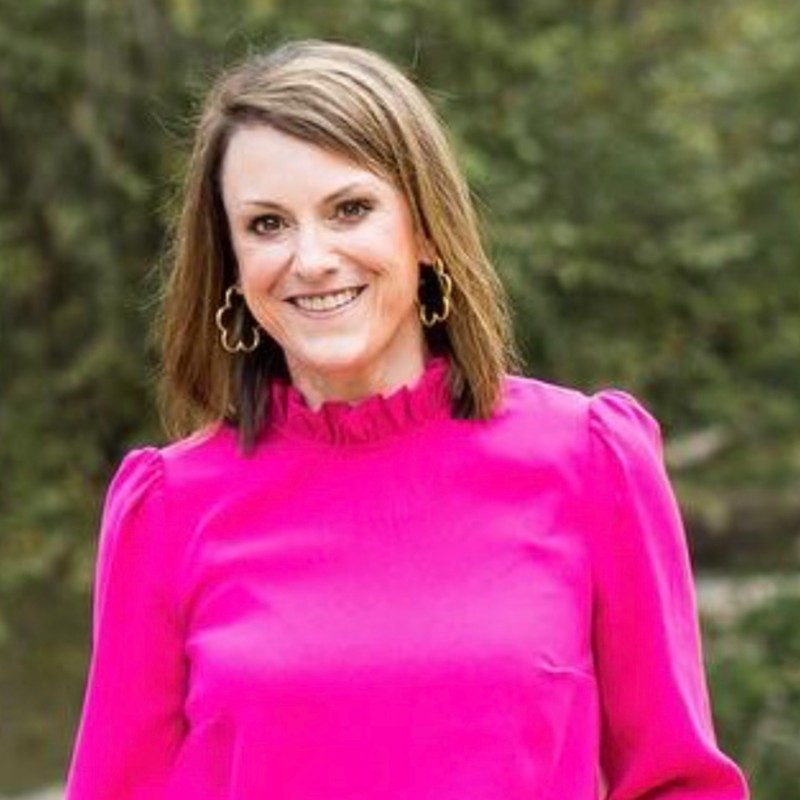
This webinar features Brooke Hardin and provides resources for using multi-modal writing responses to engage students in writing.

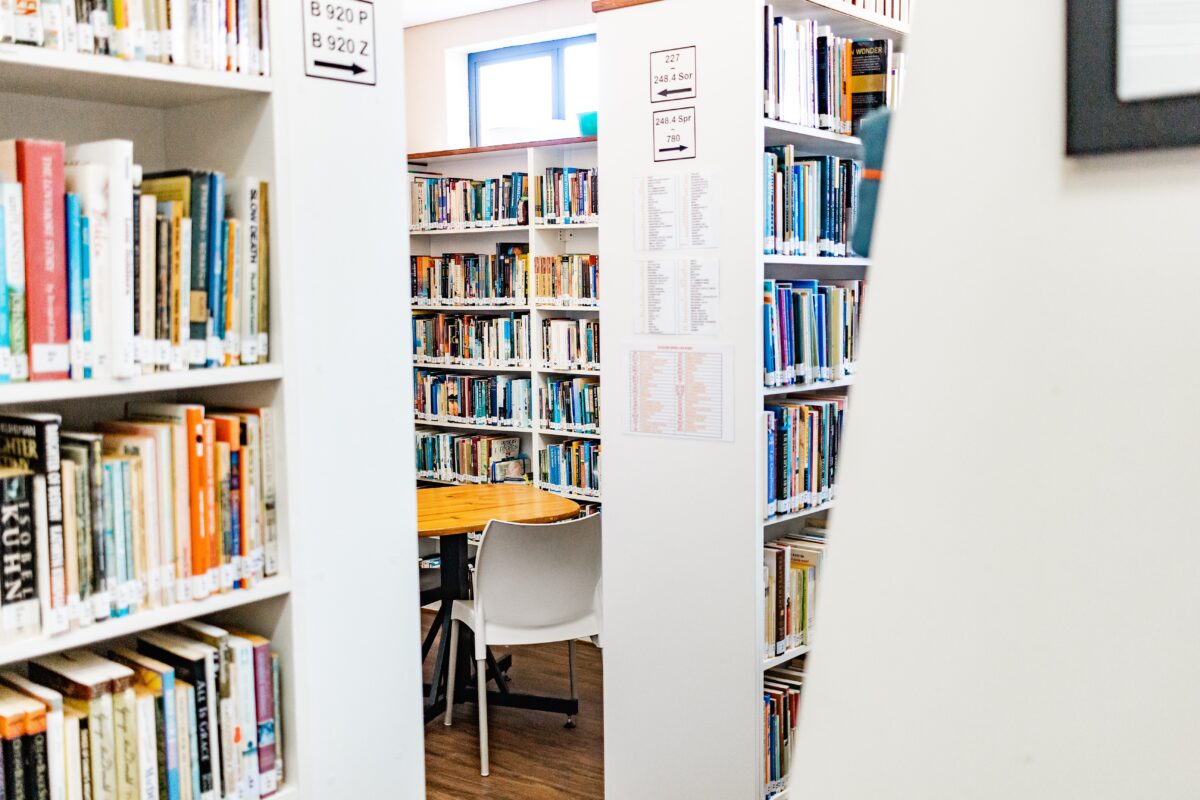
This week’s blog is by Beth Shaver as she shares how to develop primary source anthologies in Social Studies and History courses. Read more about Beth at the end of her blog.
When I think about literacy in social studies, my mind is automatically drawn to conversations around the purpose of social studies. There is a consensus that the primary purpose of social studies is to educate our students about citizenship and active participation in our republic (NCSS, n.d.). As teachers, we understand that literacy is a necessity for civic engagement and that literacy, and the social studies, are inextricably linked.
For our students, however, that connection may not be so clear. I imagine that we would be hard-pressed to find a social studies teacher who has not been asked the age-old questions of ‘Why do I have to learn this?’ and ‘Who cares about a bunch of old dead men?’ Honestly, the root of their argument is valid. Falling back on Mark Twain’s musing that “history doesn’t repeat itself, but it often rhymes” as a rationale is simply not enough to convince our students that social studies generally, and literacy in the social studies specifically, is necessary or that primary sources are useful.
If we, as teachers, are going to ask students to read, think critically, and be willing to participate in critical discussions, they are going to want to know why. Especially in the modern era when we are competing with cell phones and social media in the classroom, our students need to internalize why social studies matters to them. Ultimately, reading in social studies classrooms must be relevant to our students.
Charting a Student-Centered Approach
While there are many approaches to student-centered, engaging, literacy-based, and relevant lesson plans in social studies classrooms, an approach that I used in my classroom, and had success with, was the individual curation of anthologies. As a White woman who was teaching the African American Studies course, this approach came about because it was important for me that students had the autonomy to research and learn about ideas and issues that were important to them in parallel to the history that they were learning in class. I knew that I did not have the authority or ability to speak to every issue. So, I focused on the history and taught the students how to find voices and experiences of the past in primary source materials, based on what they were interested in and curious about.
Although the anthology originated in an elective course, it can be easily applied in any history-based social studies course and can be scaffolded or extended based on the needs of the individual learner. Application of state social studies standards to this project can be woven in easily with this project as well. As an example, in North Carolina, our social studies standards ask students to trace ideas and themes throughout the eras as they seek to understand change over time through history. The anthology approach embraces this goal by encouraging students to pull threads throughout history that pique their curiosity.
In my class, students had the opportunity to take the course at the academic (e.g., general education) or honors level which meant that within one classroom, I had a wide range of students representing diverse learning experiences and reading abilities. Each of them approached the anthology project as individuals and at their own level, and by the end of the semester, each student had an anthology to present at a meet-the-author event in our school’s media center.
The Anthology at a Glance
The work to begin a course-long anthology project begins at the beginning of the course and requires patience from both the teacher and the students. Each must understand that this type of project requires learning, adjustments, scaffolding, thoughtful preparation, and structure. To me, this work is the most exciting and has the potential for the greatest rewards! Early in the course, lessons around digital literacy and digital history are crucial for student success and can guide students toward recognizing reliable websites and materials for their projects (Manfra, 2020; Wineburg & McGrew, 2019). My diverse group of learners needed to be provided with a digital library of resources that each learner could use as a starting point. While some were confident and able to find reliable resources independently, others required the scaffolding of more concrete places to start, especially in the beginning.
A second consideration early in the course is how students will source and analyze the primary sources they use. Following a format found in many historical anthologies, we started by asking each student to find the title, author, and date of the source that they found. Then, using different scaffolding strategies depending on the source and the student, we modified an Advanced Placement source reading strategy, HIPP+: Historical context, intended audience, purpose, point of view, and the + represented the student’s interest in the document, theme, or history. This allowed students to work towards understanding each source they chose, unpacking it, and learning to express why they found it valuable.
Finally, the most significant portion of this project is the focus on student choice. Each student had the opportunity to either choose a theme for their anthology or to keep it flexible depending on their own goals and interests. We spent time as a class brainstorming potential themes that could transcend time and thinking about the potential that each theme could hold. Taking this approach gave students agency to trace themes and ideas throughout history, taught them disciplinary literacy skills, and allowed them to find a love of history based on their research interests.
In the end, each one of my students completed an anthology that highlighted two to three primary sources from each unit of study in our class. Each one was different. Each one was special. Each one represented an individual’s unique learning.
The file below is an example of an organizer for identifying and understanding key terms in a reading selection.
References
Manfra, M. M. (2020). Digital history 2020. Social Education, 84(2), 118-122.
National Council for the Social Studies. (n.d.). About: The national council for the social studies. https://www.socialstudies.org/about/about#:~:text=The%20primary%20purpose%20of%20social,and%20involvement%20in%20civic%20affairs.
Wineburg, S., & McGrew, S. (2019). Lateral reading and the nature of expertise: Reading less and learning more when evaluating digital information. Teachers College Record, 121(11), 1-40.

Elizabeth (Beth) Shaver is a doctoral candidate in the Department of Teacher Education and Learning Science at North Carolina State University with a concentration in Social Studies. She has taught social studies for fourteen years between California and North Carolina.
This webinar features Beth Shaver and provides resources for collecting Social Studies resources from multiple perspectives. Click here to access.

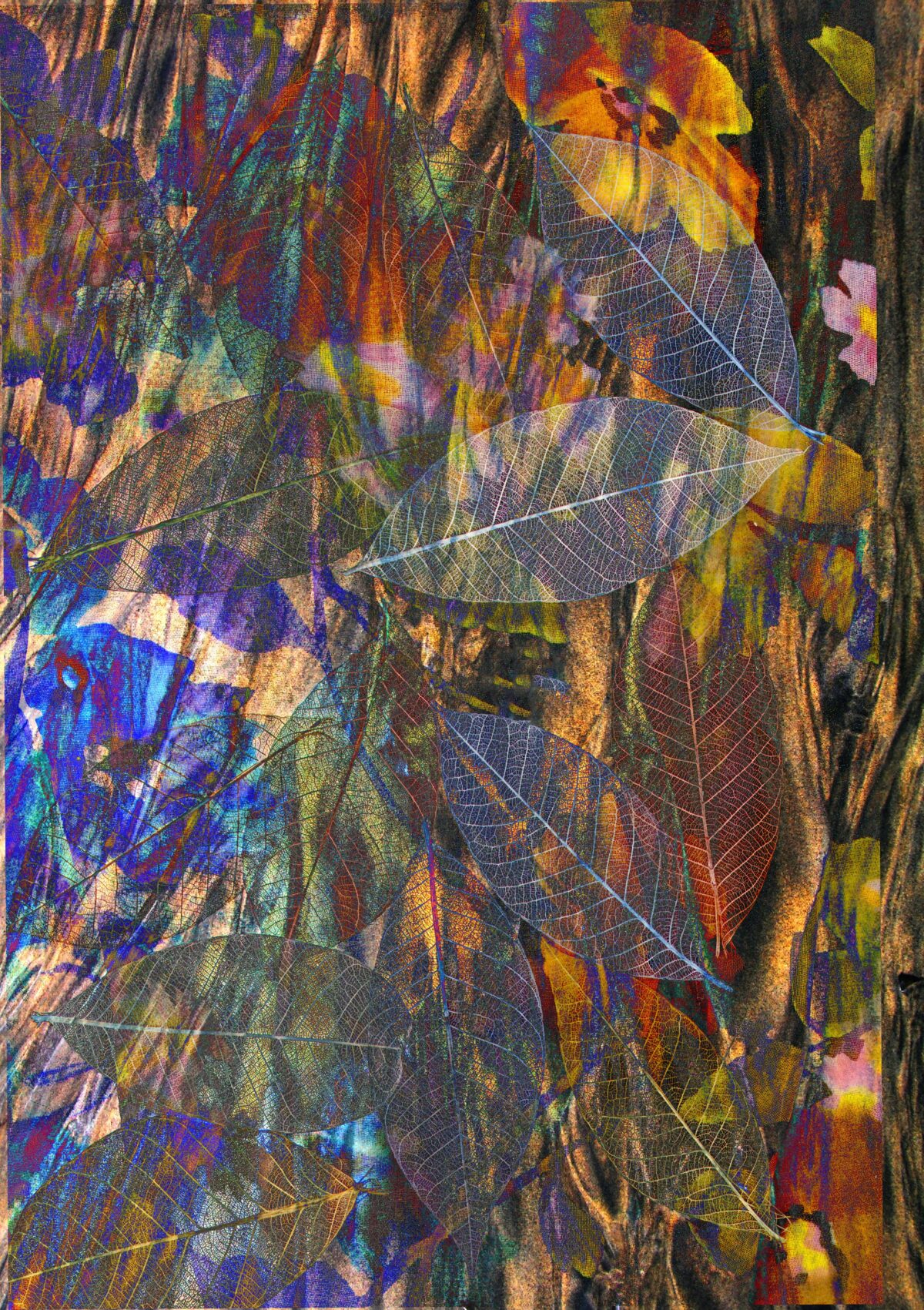
This blog is written by Katie Kelly to remind us how and why to teach a more current and accurate history curriculum. Read more about Katie at the bottom of her post.
Looking Back
For far too long, social studies has been taught (if taught at all) through a teacher-centered model comprised of lectures, note-taking, and task-oriented textbook reading. Students are assigned chapters with questions to answer and are later tested on the content. History becomes rote memorization of key dates and figures without meaningful context or deep learning. Therefore, we should not be surprised that many students lack understanding of significant historical events and find social studies both boring and irrelevant. A 2020 survey of adults under forty revealed that ten percent of respondents were unfamiliar with the Holocaust, and sixty-three percent of those surveyed did not know that over six million Jews were murdered in the Holocaust (Pew Research Center, 2020).
This is frightening and concerning. Not only do we need to ensure that young people are learning history but also that they are learning about it from multiple perspectives in order to weave a more complete tapestry of truth. Dr. Gholdy Muhammad (2020) reminds us to consider how our curriculum and instruction help us understand power, equity, and anti-oppression. Our teaching practices must be responsive to the historical events that shape the present if we aim to help students understand content from marginalized perspectives (Muhammad, 2020).
Teaching Today
Textbooks remain the primary source of social studies content in many classrooms (Brophy & Alleman, 2009). One problem with relying solely on textbooks is that they are designed as an overview of vast periods of time and lack depth and breadth on specific topics. As a result, textbooks often convey oversimplified information and are frequently told from a single perspective that omits the voices and stories of historically marginalized groups (Yearta & Kelly, 2021). This results in a narrow, biased, white-washed curriculum. Sanitized versions of history induce a sense of patriotism while ignoring the complicated past and present (Demoiny & Ferraras-Stone, 2018). As James W. Lowen writes in Lies My Teacher Told Me: Everything Your American History Textbook Got Wrong (2018),“The stories that history textbooks tell are all predictable; every problem has already been solved or is about to be solved… Textbooks exclude conflict or real suspense. They leave out anything that might reflect badly upon on national character.”
We cannot ignore our complicated and difficult past if we seek a better tomorrow for future generations. To foster increased engagement in learning a more complete and accurate history, we must build our capacity and willingness to include multiple perspectives and acknowledge that every perspective is true and partial (Hamilton et al., 2020).
Moving Forward
In order to teach a more complete and accurate history, we can incorporate multiperspective text sets including books, articles, primary sources, multimodal resources, etc. featuring the stories and perspectives that have traditionally been silenced or marginalized. Multiperspective text sets help students layer their learning about complex history to develop a more nuanced and accurate understanding of how it influences the present. When students have opportunities to connect the past to the present, history becomes more relatable and relevant to their lives (Kelly et al., 2023).
In our book, Critical Comprehension: Lessons for Guiding Students to Deeper Meaning (2023), we offer a multiple read framework to help students move beyond passive acceptance of information towards a deeper critical analysis of text by questioning the author’s intent, the information included/excluded, how the text positions the reader, and who benefits or is harmed by it. The return read seeks to disrupt and interrupt widely accepted narratives, the writer’s intention, and the reader’s stance to uncover hidden truths. This return read, or critical read, is necessary when examining the ways in which history is presented. As readers deconstruct texts, they think critically about historical and current events to examine power relations revealed in text and mirrored in society (Jones, 2006; Vasquez, 2010).
Sample questions for critical reading:
- Whose story is being told?
- Whose stories are being left out?
- Who benefits? Who is harmed?
- How does this perspective position the reader?
- What does the author want the reader to think or know?
- How does the text perpetuate stereotypes?
- How do your assumptions and associations position you to interact with text?
These questions serve as a framework to help students move beyond the dominant narrative to explore counter narratives and expand their perspectives and understanding of our country’s past and present. History textbooks often center the stories of the victor, the hero, the white male. For example, we think of our founding fathers and our first president and general of the Continental Army who led us toward independence. The Declaration of Independence stated that all men were created equal. We celebrate the Fourth of July with displays of patriotism from waving flags, red, white and blue clothing, parades, and fireworks displays. Yet, history textbooks rarely explain that neither women nor people of color had independence and freedom. In fact, slavery was not abolished for another 86 years when Abraham Lincoln signed the Emancipation Proclamation. Even then, it took three years for this information to reach enslaved people in Texas. On June 19, 1865, federal troops traveled to Galveston, Texas, to bring the news of freedom. This day has been commemorated as Juneteenth, and though Black citizens have long celebrated it, it has largely been overlooked until recently. Juneteenth became a federal holiday in the U.S. in 2021 amidst continued activism and the momentum of the Black Lives Matter movement. Teaching about Juneteenth is one way to help students bridge the past to the present to learn the nuanced and more complete truth of this part of U.S. history. This Book Buzz blog post offers a sample text set to help students deepen their understanding of the importance of Juneteenth.
Our country has a long history of centering the power of dominant voices. This perspective is privileged in the curriculum in our schools as well. Therefore, we must work to ensure that multiple perspectives are included when teaching social studies. Consider your own school experiences. What were you taught? What weren’t you taught? Whose stories were included? Whose were left out? How did that shape your beliefs about the world and your place in it? (Kelly et al., 2023).
Critical comprehension requires deeper reading to consciously question the text, the world, and the stories we’ve been told. Critical readers seek a more nuanced understanding by uncovering silenced voices, omitted narratives, and multiple perspectives needed to weave a more informed and complete tapestry of truth.
References
Brophy, J., & Alleman, J. (2009). Meaningful social studies for elementary students. Teachers and Teaching, 15(3), 357– 376.
Demoiny, S.B. & Ferraras-Stone, J. (2018). Critical Literacy in Elementary Social Studies:
Juxtaposing Historical Master and Counter Narratives in Picture Books. The Social Studies, 109(2), 64-73.
Hamilton, D.M., Wilson, G.M., & Loh, K.M. (2020). Compassionate Conversations: How to speak and listen from the heart. Boulder, CO: Shambhala.
Jones, S. (2006). Girls, social class and literacy: What teachers can do to make a difference. Portsmouth, NH: Heinemann.
Kelly, K., Laminack, L. & Vasquez, V. (2023). Critical Comprehension: Lessons for Guiding
Students to Deeper Meaning. Thousand Oaks, CA: Corwin Press.
Lowen, J. W. (2018). Lies My Teacher Told Me: Everything Your American History Textbook Got
Wrong. New York: The New Press.
Muhammad, G. (2020). Cultivating Genius: An Equity Framework for Culturally and Historically Responsive Literature. New York: Scholastic.
Pew Research Center, Jan. 22, 2020, “What Americans Know About the Holocaust”. Retrieved from https://www.pewresearch.org/religion/2020/01/22/what-americans-know-about-the-holocaust/.
Vasquez, V. (2010). Getting beyond “I like the book”: Creating space for critical literacy in K-6 classrooms. Newark, DE: International Reading Association.
Yearta, L. & Kelly, K.(2021). Digital Storytelling to Enhance Social Studies Content Knowledge, Explore Multiple Perspectives, and Advocate for Social Justice. In J. Tussey & L. Haas (Eds.). Connecting Disciplinary Literacy and Digital Storytelling in K-12 Education. IGI Global.
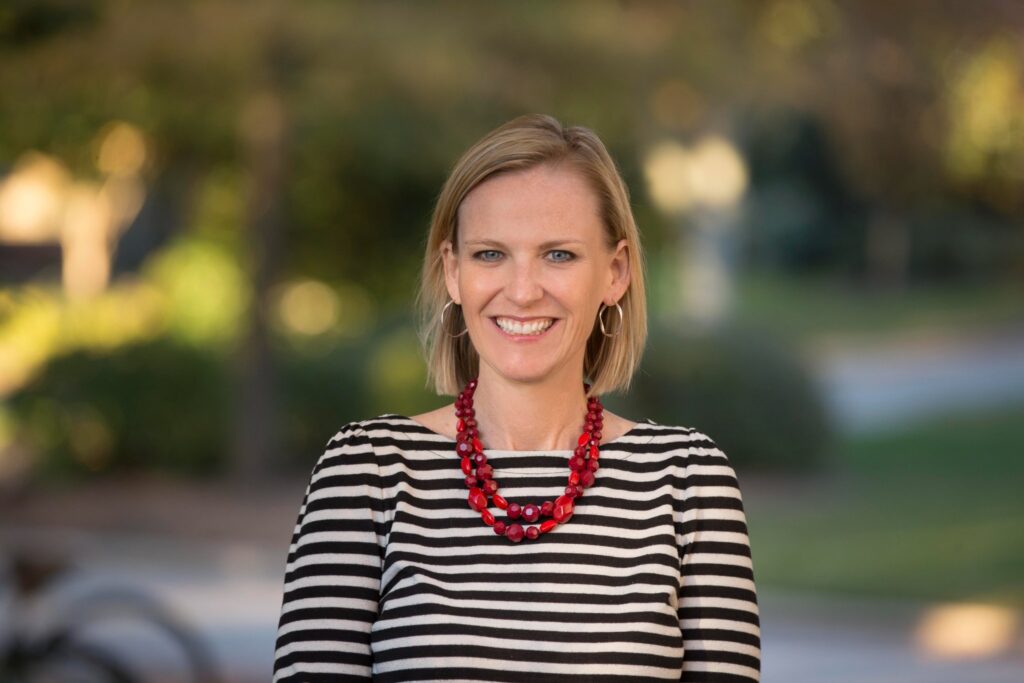

This blog is written by Tori Young and shows us how to scaffold written essays resulting in a video essay. Read more about Tori at the bottom of her post.
Have you ever caught yourself in the never-ending rabbit hole of online video essays? Conspiracy theories, movie plot analyses, theme park history and so many more topics are explained in a thorough manner with research and analysis weaving together ideas and backgrounds you never would have put together. Even if you have not stumbled into this online phenomenon, I can assure you that your students have. Whether hour long YouTube deep-dives, or short TikTok synopsis series, students are being presented with researched information about a wide range of topics even if they do not recognize it. After noticing this for myself, I asked “why aren’t more essays like this?”
Research papers and argumentative essays are the primary form of essay writing used in my history classroom. I want my students to know how to be informed citizens and communicate their ideas and beliefs in a way that is grounded in historical truth and facts. I typically scaffold this process throughout the year using activities based on the content. Typically, I start out with an exit ticket asking students to pick a side on a tough topic (no in between!) and tell me why they chose their stance. Nothing formal just to get them to practice how to take a stance. Slowly I will make them add facts from a document we read in class to back up their positions and eventually start teaching the research process by having them look for reliable sources of their own to support their side. Eventually, all that information can be used to organize and create a well-written paper for social studies.

The broad goals of this process are to teach students how to make informed decisions and communicate their ideas effectively. While a traditional essay is an excellent way to practice those skills, many teachers like me have seen the difficulties for students that come with that ultimate step of writing the paper. For many students, the formal language or length of the writing assignment can be daunting to approach, causing them to shut down before trying. But we look at them confused; they have already practically written the paper with their summaries and research. Why can’t they just fill in the gaps with just a few sentences?
I found myself asking these questions every year. When I asked my students to verbalize their answers, I got great insight and connections to the content from them. They know this content, in fact many of them get passionate about it when it is time for them to argue. As I pondered this, I concluded that most of my students will only share their research and findings about topics verbally in their futures. Why am I not adding a verbal layer of assessment to this process?
This is where the wonderful world of video essays came into play for me and my classes. A video essay takes on the same structure as an essay but uses visual aids and commentary to present the information. Just like a good historical essay, it begins with background information on the topic and a clear thesis. It is then followed by key points that are supported by examples. And lastly, the video concludes with the creator’s main idea and the topic’s historical impact. Video essays help students practice research skills, organizing ideas and examples, but instead of writing, they are practicing presentation skills!

An example of this in my high school US History classes is during our unit on the Antebellum era. There are a lot of names of important people during this period; abolitionists, women’s rights activists, and politicians. I let my students pick from a list of key figures to research to share their life story. I give loose parameters on the assignment, asking students to provide the background of the person’s life, their contributions to Antebellum America, and their lasting impact on the United States. Some students may need more guidance, so it may be helpful to provide examples of information you are looking for such as their birthplace, career, and writings to name a few possibilities. I then ask students to record a two-minute video using WeVideo or Screencastify to present their findings using media to support their discussion.
I have seen my quietest students speak without hesitation in these videos, presenting on topics with great care and speaking skills. The key is that I do not show them in front of the class. Once the fear of being judged by their peers is taken away, students become comfortable with the process. They also begin to get creative with their media. Many will create a PowerPoint to display and follow along with for their video. However, I have seen animations, skits, and eulogies come out of this assignment as students begin to find their creativity with this medium.
Students are still practicing all the skills I need them to learn for my goals, but by incorporating video essays I have seen higher levels of engagement with historical content. This is not meant to take away from the importance of formal writing. While not all our students will go on to university and academia, they will still need to write important emails and apply for jobs. Formal writing is an important skill, but if you also notice students needing an extra step in scaffolding the writing process in social studies then consider video essays. Students will even surprise themselves with how much they know!
Images courtesy of Pexels

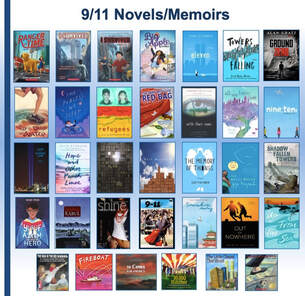
This blog is written by Lesley Roessing suggesting that a variety of texts can be used to teach historical events still impacting the world today. Read more about Lesley at the bottom of her post.
No historical event may be as unique and complicated to discuss and teach as the events of September 11, 2001, the day terrorists crashed planes into, and destroyed, the Twin Towers of the World Trade Center. At the time of this event, no child in our present K-12 educational system was yet born, but, in most cases, their parents and educators would have been old enough to have some knowledge of, and even personal experience with, these events, making this a very difficult historic event for many to teach. However, with the devastation and impact of these events on our past, present, and future and as ingrained a part of history these events are, they need to be discussed and understood as much as possible.
An effective way to learn about these events is through story. Powerful novels have been written about this tragedy, for all age levels and, fascinatingly, each presents a different perspective of the events. Some take place during September 11, some following the events, some a few years later or many years later, and a few include two timelines. Many take place from the perspectives of multiple characters.
On September 11, 2021, YA Wednesday posted my guest-blog “Novels, Memoirs, Graphics, and Picture Books to Commemorate September 11th.” In this blog, I interviewed authors and reviewed and recommended 24 texts and six picture books.
Since then, I have read two additional texts:
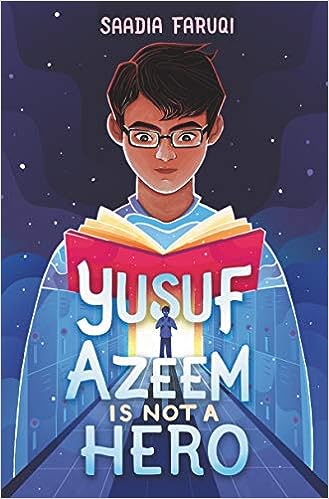
Yusuf Azeem is Not a Hero by Saadia Faruqi
“Suspicion of those unlike us is common human behavior. We don’t trust who we don’t know. But yes, 9/11 was terrible, and it really fueled the fire of hatred in this country.” (184-5)
Sixth grader Yusuf Azeem was born in Texas and is an American; his mother was also born in America and his father was a Pakistani immigrant who runs the popular A to Z Dollar Store in town (and a somewhat a local hero after capturing an intruder threatening his store and customers). The family is Muslim, but, understandably, Yusuf is shocked when sixth grade begins with threatening notes in his locker. When one says, “Go home,” he is hurt and confused. Frey, Texas is his home. Surely the notes are meant for someone else.
This is a novel that may benefit from some background on the events of September 11, 2001, since the action takes places in 2021 but, read individually, Ausuf’s uncle’s journal helps to fill in information. The importance of this particular novel is that it demonstrates that, for some of our citizens and students, “Twenty years. So much time. But things haven’t really changed at all.” (48) One of the major events in the story—when a little computer in his backpack beeped and, instead of questioning him and investigating, Ausuf is thrown in jail for twelve hours—is based on a real event from 2015 where Ahmed Mohamed, a Muslim 14-year-old, was arrested at his high school because of a disassembled digital clock he brought to school to show his teachers [https://www.cnn.com/2015/09/16/us/texas-student-ahmed-muslim-clock-bomb].
It is vital that our children learn about 9/11 because, as Yusuf’s mamoo says, “History informs our present and affects our future.” (81)
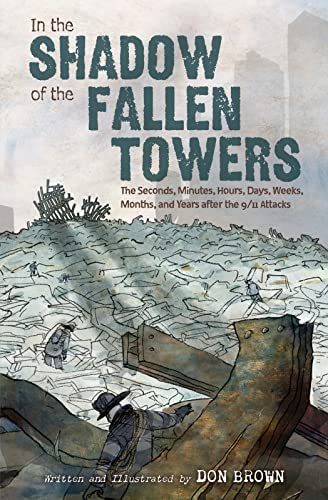
In the Shadows of the Fallen Towers by Don Brown
Don Brown’s graphic novel recounts events following the 9/11 attacks on the Towers and the Pentagon from the moment of the “jetliner slamming into the North Tower of the World Trade Center” to the one-year anniversary ceremonies at the Pentagon, in Shanksville, Pennsylvania, and at Ground Zero. It also covers the fighting of U.S. troops in Afghanistan and the capture and interrogation of prisoners from an al-Qaeda hideout in Pakistan.
The drawings allow readers to bear witness to the heroism of the first responders, firefighters, and police as they move from rescue to recovery over the ten months following the attacks and learn the stories of some of the survivors they saved. It is the story of the nameless “strangers [who] help[ed] one another, carrying the injured, offering water to the thirsty, and comforting the weeping.” (23)
We learn and view details that we may have not known, such as “Bullets start to fly when the flames and heat set off ammunition from fallen police officers’ firearms,” (11) the “Pentagon workers [who] plunge[d] into the smoke-filled building to restore water pressure made feeble by pipes broken in the attack,” (36) and former military who donned their old uniforms and “bluff[ed their way] past the roadblocks” to “sneak onto the Pile” to help. (50, 52)
For more mature readers this book adds to the story of 9/11 in a more “graphic” way.
I have taught a unit on NINE ELEVEN through book clubs in multiple schools from grades 5 through 9 in both ELA and Social Studies classes. Children and adolescents have felt comfortable these sensitive and challenging concepts and examining these troubling events and some of the ensuing difficulties, prejudices, and bullying, through the eyes of characters who are around their ages, some readers sharing personal stories in their small collaborative groups. I am thankful for the authors who have allowed our children to experience these events in a safe and compassionate way. I have presented these novels and strategies and lessons for reading through book clubs at local workshops and national conferences. I included my 9/11 Book Club unit as a chapter in TALKING TEXTS: A Teacher’s Guide To Book Clubs Across The Curriculum.
Condensed and reproduced with permission from https://www.literacywithlesley.com/blog posted on September 2, 2023.

Follow her website, created to support educators—teachers, librarians, and parents, at https://www.literacywithlesley.com/
This blog is written by Rebecca G. W. Mueller and is about the powerful effect of images as an instructional tool. Read more about Rebecca at the bottom of her post.
Let’s do a quick exercise.
Take a moment to revisit several recent blog posts.
How many blogs included visuals? What type of visuals? Did you pay much attention to the visuals as you read the blogs? Did you think about how the visuals interacted with the text and communicated their own meaning?
We are surrounded by visuals – from emojis and selfies to infographics and data charts. Visuals are an important communication tool that we must read just like we do text, but readers do not always bring the same critical eye to visuals as they do words. Readers often deem visuals as objective depictions of information and forget that, for example, a photographer makes many decisions about how to best capture a moment just as a speech writer carefully selects their words.
A key facet of literacy in social studies classrooms is strengthening students’ abilities to critically engage with visuals (Callahan, 2013; Roberts & Brugar, 2017). Because students’ worlds are often saturated with visuals, teachers may presume that students have the skills to read them, but one’s ability to select the most flattering filter does not necessarily transfer to considering a political cartoon’s symbolism. Critically engaging with visuals requires substantial vocabulary and background knowledge, particularly around symbols, artistic conventions, and statistics. Below, I introduce some tools teachers can use to scaffold students’ work with visuals and discuss how building this capacity supports disciplinary literacy.
Useful tools
The Stanford History Education Group (SHEG) has an extensive array of resources, lessons, and assessments that support content and disciplinary literacy. SHEG recently turned its attention to civic online reasoning and has developed materials that address skills necessary for sense-making in a visual-filled digital world, including evaluating photos and evaluating data. All visitors can view student-friendly crash course videos, but a free-account is required to access some resources (e.g., assessment tools, rubrics, sample responses), most of which are most appropriate for middle or high school students. Using the three-question scaffold Who’s behind the information? What’s the evidence? and What do other sources say?, students develop the disposition to encounter visuals with healthy skepticism.
Both the Library of Congress and National Archives have document analysis tools and support materials to guide students’ work with visual sources. Both sites provide a general guide and specific guides that are tailored for particular source types, including charts and graphs, maps, photographs, and political cartoons. For example, the Library of Congress’ basic tool prompts students to observe, reflect, and question. The analysis tool modified for use with political cartoons includes guiding questions such as What do you see that might be a symbol? What was happening when this cartoon was made? and What methods does the cartoonist use to persuade the audience? These documents, which include versions appropriate for different readiness levels, prompt students to utilize core literacy practices while also emphasizing the influence of form and function on how we create and read visuals.Project Zero’s Thinking Routine Toolbox includes an array of strategies suitable for various disciplines and ages. The Toolbox has identified strategies that are well suited to exploring art, images, and objects. One of my favorites is See, Think, Wonder because it stresses the importance of looking closely before drawing conclusions and identifying additional information that will strengthen those conclusions. This simple, flexible strategy demands similar practices as the scaffolds described above but with language accessible to all ages.
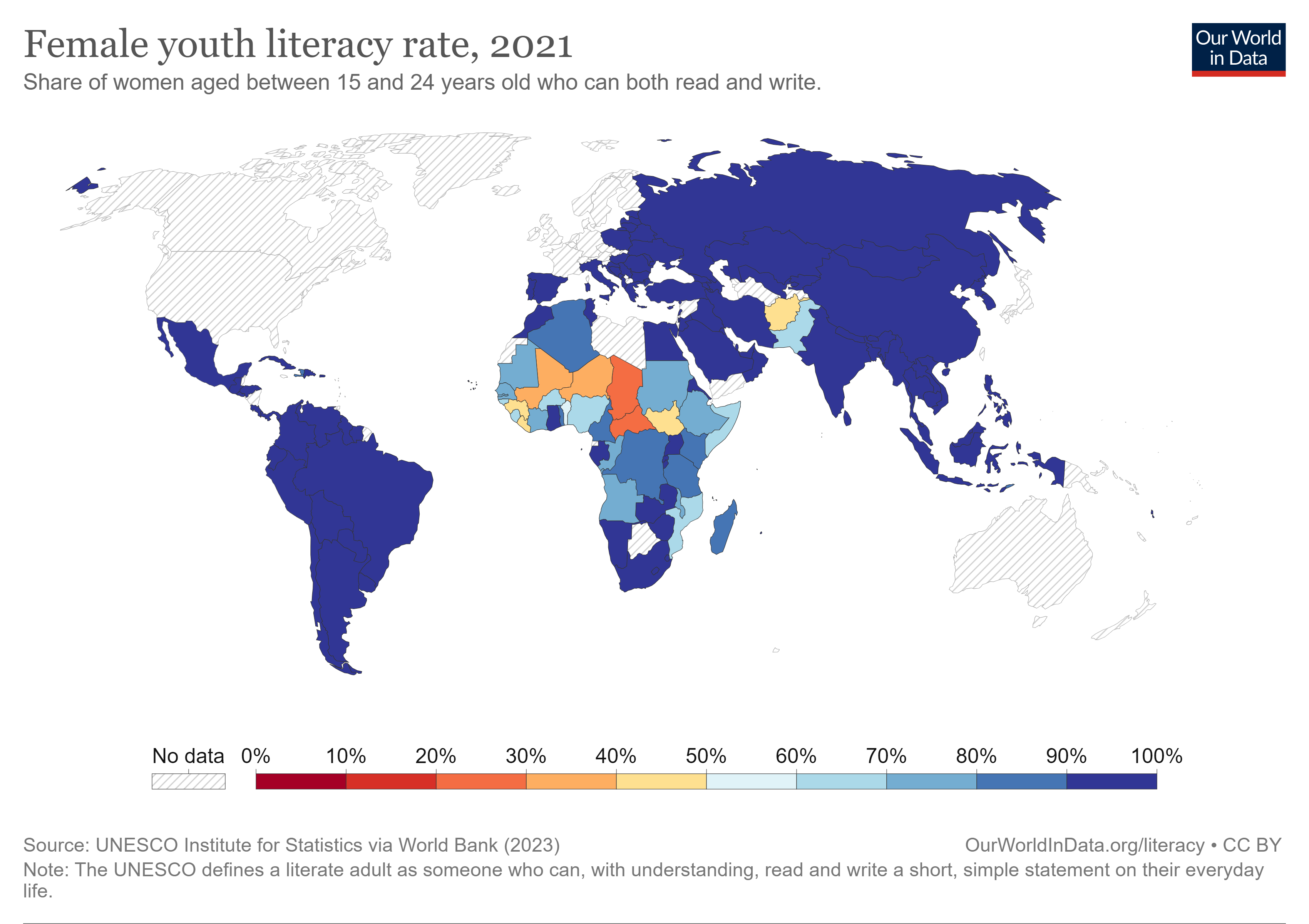
Retrieved from https://ourworldindata.org/literacy
See, Think, Wonder can be paired with Zoom In, which prompts students to consider increasingly larger portions of an image and revise their conclusions based on new information. In both cases, students build the dispositions to root conclusions in evidence, be open to revising conclusions based on new information, and reflect on how their personal experiences and biases may influence the way they interpret visuals.



Ford, E., photographer. (1957). Tennis talk Althea Gibson, U.S. and Wimbledon tennis champion, gives some pointers on the game which has brought her international fame. Some 500 students attended the tennis clinic yesterday at Midwood HS, directed by Murray Eisenstadt, varsity coach // World Telegram & Sun photo by Ed. Ford. New York, 1957. December. [Photograph] Retrieved from the Library of Congress, https://www.loc.gov/item/2013650115.
Visual literacy as civic literacy
Researchers affiliated with SHEG’s Civic Online Reasoning project have argued that “the health of a democracy depends on people’s ability to access reliable information” (Breakstone, et al., 2021, p. 505). Because so much of the information we encounter is visual, building students’ visual literacy is fundamental to civic literacy. Utilizing the tools discussed above strengthens students’ awareness of the constructed nature of visuals and their ability to apply disciplinary sourcing practices to better understand how context and intention influence the way we create and read visuals.
References:
Breakstone, J., Smith, M., Wineburg, S., Rapaport, A., Carle, J., Garland, M., &
Saavedra, A. (2021). Students’ civic online reasoning: A national portrait. Educational Researcher, 50(8), 505-515.
Callahan, C. (2013). Analyzing historical photographs to promote civic competence.
Social Studies Research and Practice, 8(1), 77-88.
Roberts, K. L., & Brugar, K. A. (2017). The view from here: The emergence of
graphical literacy. Reading Psychology, 38, 733-777.
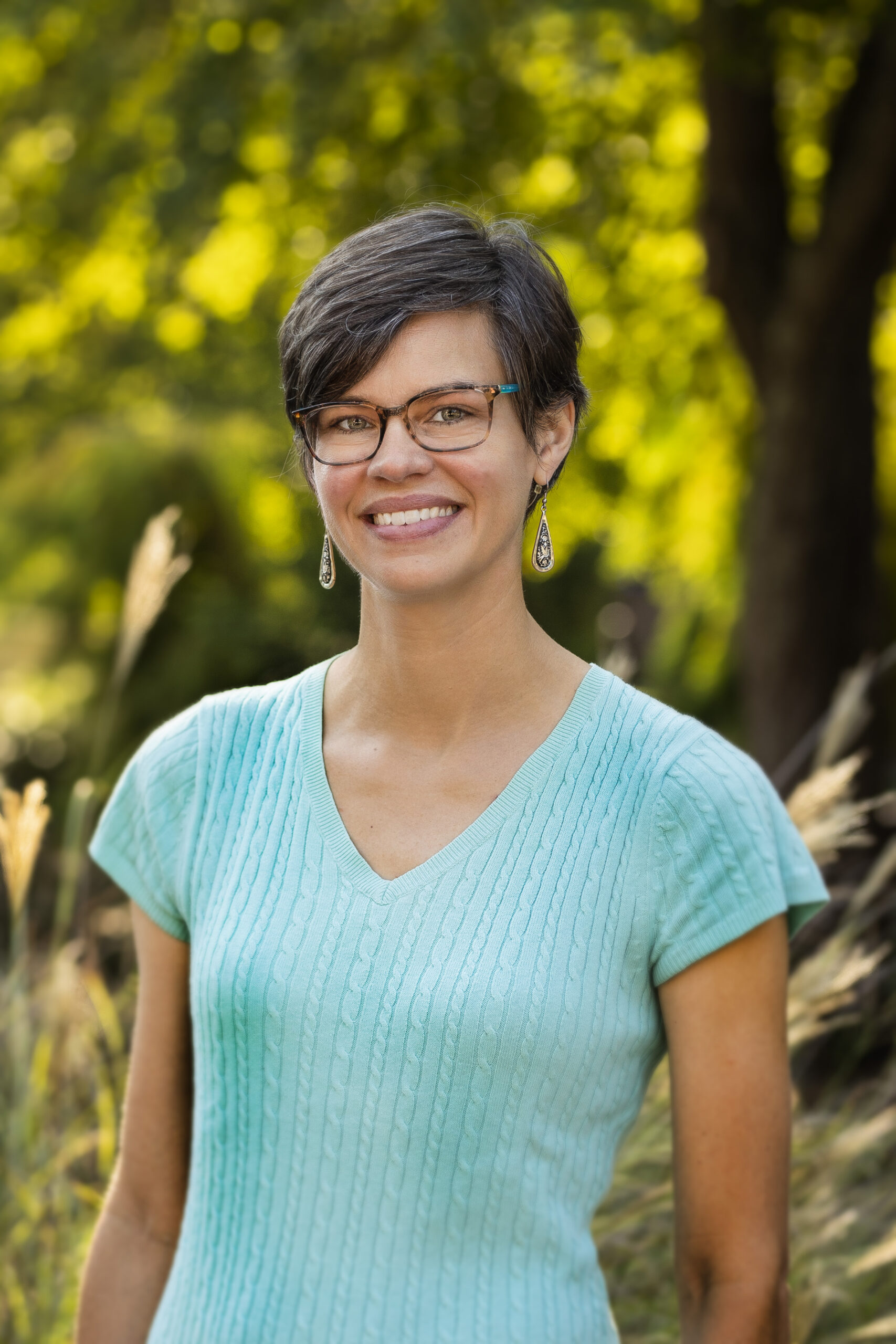
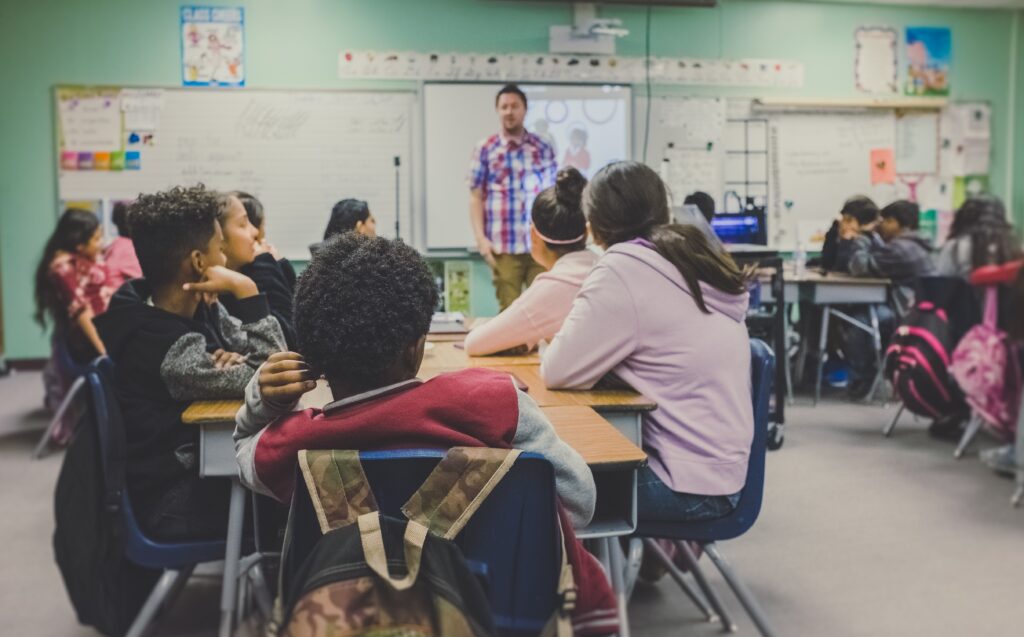
Tbis post was written by Jamie Fletcher and is a reflection on her visit to Capital Hill advocating for the literacy needs of multilingual learners. Read more about Jamie at the bottom of her post.
As educators, we are often compelled to go beyond lesson plans and grading assignments to help students learn standards-based material. Sometimes, we make classroom accommodations or modifications to the content so students can connect with the instruction. Sometimes, we go beyond the classroom and attend their extracurricular events to connect with the children. Sometimes, we advocate for them and insist on equitable opportunities in the public education system. None of this is new news to those in the education field, however, some students will soon need more than just the effort of dedicated educators.
One of the largest growing demographics in South Carolina is identified as Multilingual Learners (MLs, formerly called English language learners or ELLs). “By 2025, 1 out of 4 children in classrooms across the nation will be an English language learner (ELL) student” (NEA.org, July 2020). Across the US, the growth of MLs has risen exponentially. According to the Office of English Language Acquisition (OELA), from 2000-01 to 2019-20 school years, there has been more than a 400% increase in ML students in South Carolina. As of April 13, 2023, there were 71,727 current or monitored MLs in our state. This means they may receive services from ML educators. Students in SC who are monitored may have met the minimum program exit requirements, but must be monitored for up to four years to determine if services are still needed. Of all these ML students, less than 38% are immigrants, meaning over 62% are US citizens. Meanwhile, from 2012-13 to 2021-2022 school years, there was a 206% increase in vacancies for certified licensed multilingual learner instructors, leading to a possible decline in services and/or an increase in long-term MLs (students who remain in the program more than five years).
One maxim states that “a teacher never knows where his or her influence stops.” So, what happens when teachers unite their voices and ascend Capitol Hill? On June 21, 2023, educators from across the United States met in the offices of US Senators and US Representatives to collectively and positively affect change. The decisions made in those offices and through the votes on the Senate and House floors have a direct impact on funding and policy that trickles down to every public school classroom in America.
Prior to meetings in Washington, DC, TESOL International held their annual Advocacy and Policy Summit in Georgetown, reviewing the policy focus and explaining the impact that personal stories and sincere conversations could have. TESOL (Teaching English to Speakers of Other Languages) educators from Hawaii to Maine and Florida to California collaborated to learn how our states are different and alike and what is needed to offer equitable educational opportunities to all public school students. Carolina TESOL, representing North Carolina and South Carolina educators, attended the summit and met on the Hill to learn more about the process and to develop relationships with the offices of our senators and representatives.
As the SC Advocacy Coordinator, I started contacting DC offices to set up meetings two months prior to the TESOL International Advocacy & Policy Summit. Meetings with elected officials were requested, but sometimes staff members who specialize in education are delegated to speak with visitors. It is important to remember that these staffers are the ones who help advise the senators and representatives when it comes time to vote on policy and appropriations. Once on the Hill, 2023 Carolina TESOL President Tanya Franca and I traversed tunnels and congressional buildings to meet in different offices to share stories about education in South Carolina.
Did you know that South Carolina is one of two states with a complete ban on undocumented students pursuing higher education in public colleges and universities (technical, 2-year, and 4-year schools)? During the meetings on the Hill, Franca and I requested review and support for the 2023 Dream Act (S 365) and US Citizenship Act (HR 3194) to help immigrants seeking a pathway to citizenship, thus providing them with an opportunity for higher education.
We spoke about specific programs that the appropriations would be used for, including after-school programs and professional development for educators of MLs. We also discussed the limitations of higher education in South Carolina. On a federal level, voting for legislation that would provide a pathway to citizenship for undocumented students would improve college and career statistics, as well as graduation rates. Specifically, one student of mine who always planned to attend college moved with his family here in 2013. Beginning his junior year of high school, we were talking seriously about the SAT, ACT, and college applications and that is when we reviewed SC admissions policies. He was offered athletic scholarships and would have received academic scholarships if he was here legally. In 2020, he was accepted to North Carolina Central University where he is a starter on the football team, has the highest GPA of all players, has been nominated and earned many accolades, and is graduating in three years with a Bachelor’s degree in Business. He plans to start a Master’s program next year, but will have to remain in NC to earn the degree. This is only one example of the limitations placed on students in our state and across the country.
During our meetings, our requests for appropriations concerned ESSA Title I to support students from low-income communities; ESSA Title II, Part A to support professional learning for educators and school leaders, and ESSA Title III to improve English language proficiency and academic achievement. Other priorities for the 118th Congress include passing the Reaching English Learners Act (HR 3779) to address the critical shortage of English language teachers, as well as passing the Supporting Providers of English Language Learners Act (HR 460) to increase loan forgiveness for English language teachers.
The summit and Hill visits were meant to provide experience and build relationships. Some meetings were attended by staff members who knew the need for funding and policy updates in education; but in some meetings, we went on to explain connections between the money and the classroom, between investing in education and the cycle of poverty. The opportunities to speak with members of Congressional staff were exciting, but nothing moves quickly in DC. Carolina TESOL will continue to reach out to their offices to offer “boots on the ground” experiences in hopes of positively impacting education for Multilingual Learners. For more information about Carolina TESOL’s federal and state-level priorities in South Carolina, visit https://sites.google.com/carolinatesol.com/home/resources/advocacy/south-carolina-advocacy. Carolina TESOL is committed to advocating for Multilingual Learners (MLs) throughout the Carolinas by informing educators of national, state, and local research, issues, and policies affecting MLs and advising its membership of advocacy resources and opportunities.

Mrs. Jamie Fletcher has been teaching for over twenty years but has served the last and happiest seven as a Multilingual Learner Program Specialist in Anderson, South Carolina.
Photo by Kenny Eliason on Unsplash
Photo by Kenny Eliason on Unsplash
